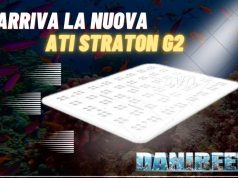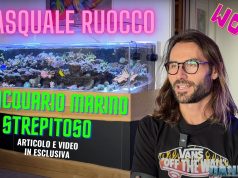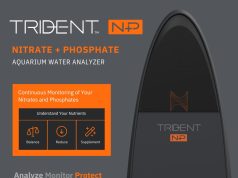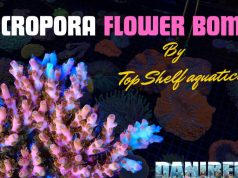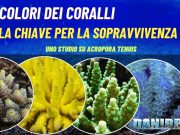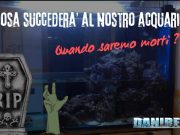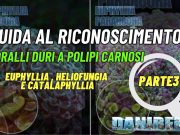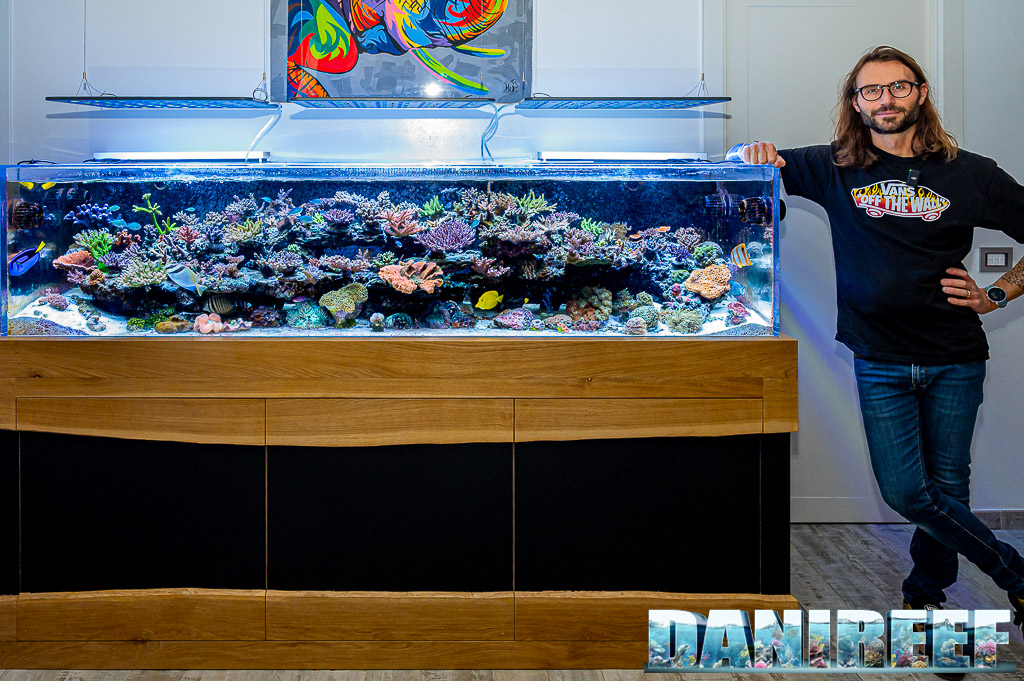
Pasquale Ruocco, also known on social media as Khorru, has one of the most beautiful marine aquariums in Italy. A glance at it will make that clear. Beyond its beauty, he also won the first DaniReef contest to vote for the most stunning marine aquarium in Italy, which we organized during the Summer of 2024.
But let’s take things slowly. If you want to know the whole story, get comfortable because there’s a lot to talk about. We met Pasquale at his home in Rome in March 2024 after seeing his aquarium on social media and falling in love with it. So we left for Rome to take pictures, interview Pasquale and make a crazy documentary that you can see below.
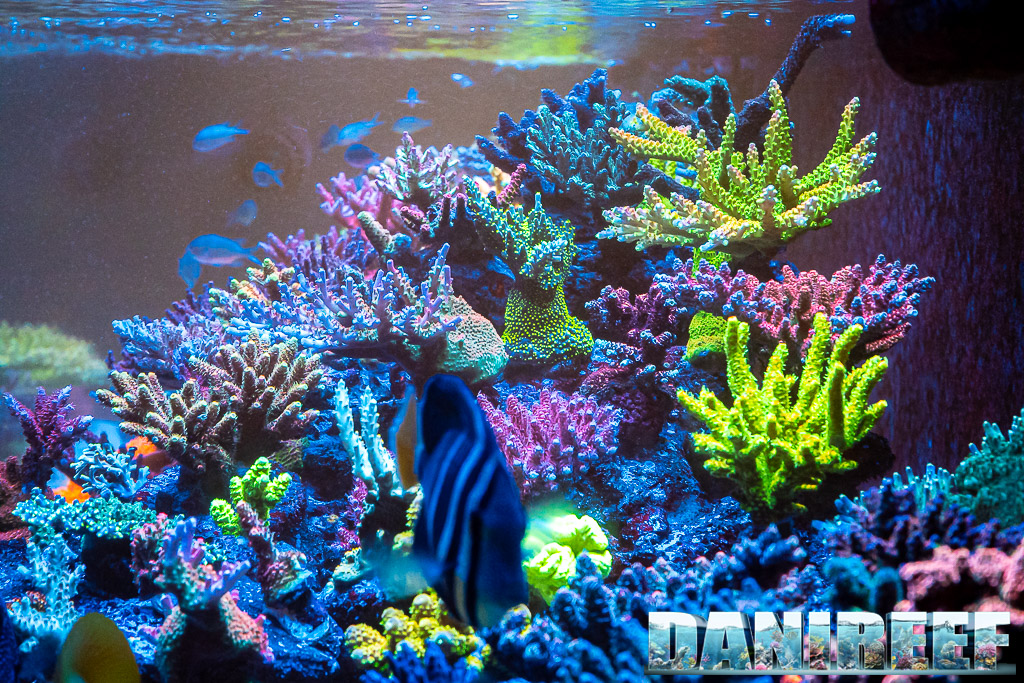
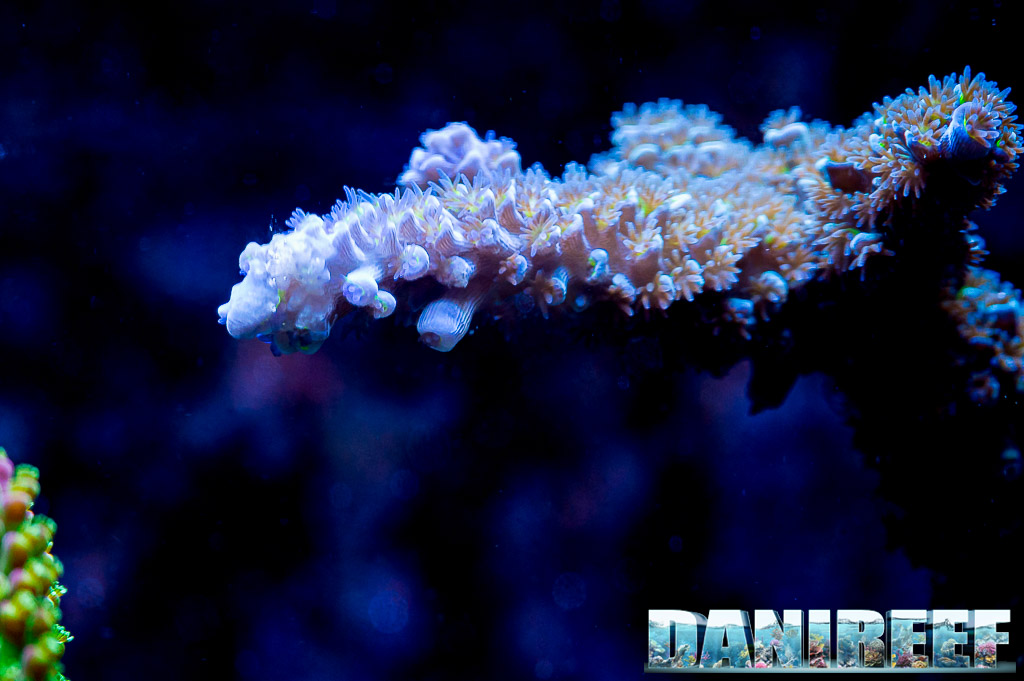
The aquarium is absolutely stunning—a true coral reef corner in a living room. Extremely natural and harmonious, with incredible coral specimens, a fantastic technical setup, and top-notch equipment. It’s the pinnacle that any aquarist can aspire to. But the best part was meeting an amazing aquarist who’s incredibly knowledgeable yet eager to share and help others.
Our video of Pasquale Ruocco’s marine aquarium, Khorru
We have been telling the story of an aquarium for a long time. You have always told me that my photos are very evocative and tell the story of an aquarium. But shooting the documentary, in my opinion, adds another dimension to the understanding of an aquarium. And this time you can’t miss the images we shot and the chat we had with Pasquale about his aquarium and the philosophy of a marine aquarium. And then at the end I also promised when we launched the contest, that we would tell you about the winner’s aquarium with great detail.
Watch the video and then come back to finish reading the article where you will also find all the detailed technical information. Zoom in to full screen, make yourself comfortable and enjoy the documentary, then don’t forget to leave a comment, like and subscribe to our channel. The video is in Italian, but you can add subtitles and then choose English.
Let’s get to know Pasquale aka Khorru better
Khorru is the nickname of Pasquale Ruocco, which you can find on his Instagram channel, but if you want to chat with him, you can also find him on the BallingMania Facebook channel, where he’s an administrator. Pasquale Ruocco is from Rome and works as a real estate agent, but that’s not why we traveled to the capital. We went to talk about the aquarist within him and to see an absolutely wonderful tank. As Pasquale told us in the interview, he was one of the first kids to have a marine aquarium—over thirty years of experience in this magical world of reef aquariums.
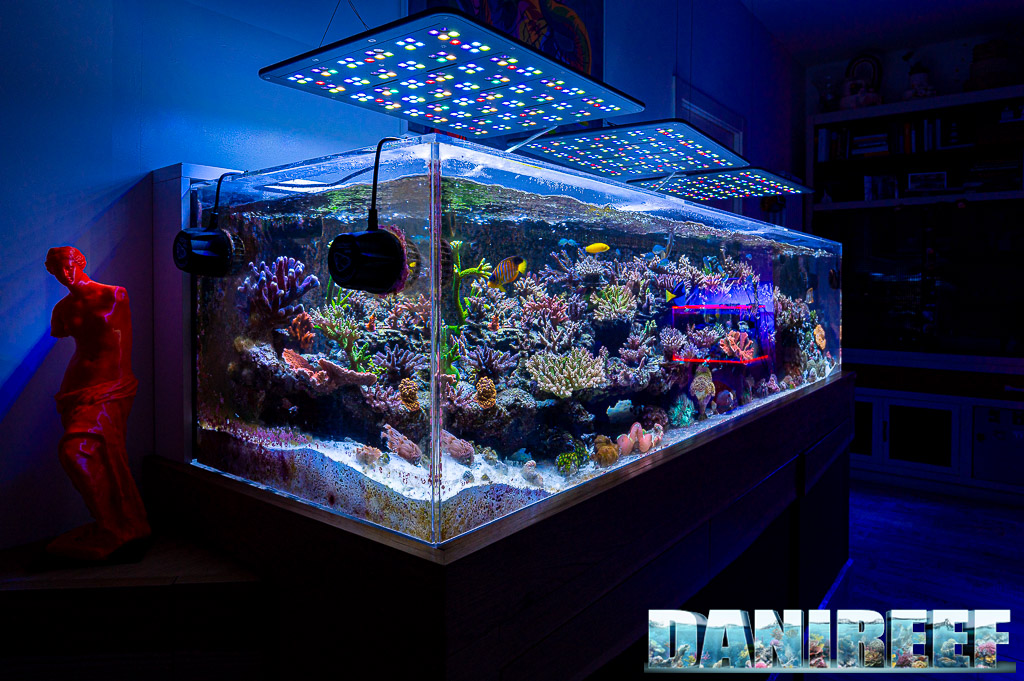
But beyond what we see—which is a lot—what struck me the most was Pasquale’s passion and willingness to share. You can hear in his words that it’s a true, long-lasting passion. After all, after thirty years, it couldn’t be otherwise. The aquarium was designed with the fish in mind—not just for providing hiding spots but, more importantly, for giving the fish a place to sleep undisturbed. Indeed, the rock structure is mostly elevated, leaving plenty of space underneath and behind it. An idea worth considering.
Victory in the contest “the most beautiful marine aquarium in Italy”
For once, let’s start from the end. As we told you, we asked Pasquale Ruocco to participate in the contest we organized where everyone could vote to choose the most beautiful aquarium. And after 5 matches, in a scoreboard where 43 marine aquariums participated, he reached the finals winning with 1152 votes against 932 of Giovanni Bartolotta (Xtweezer).
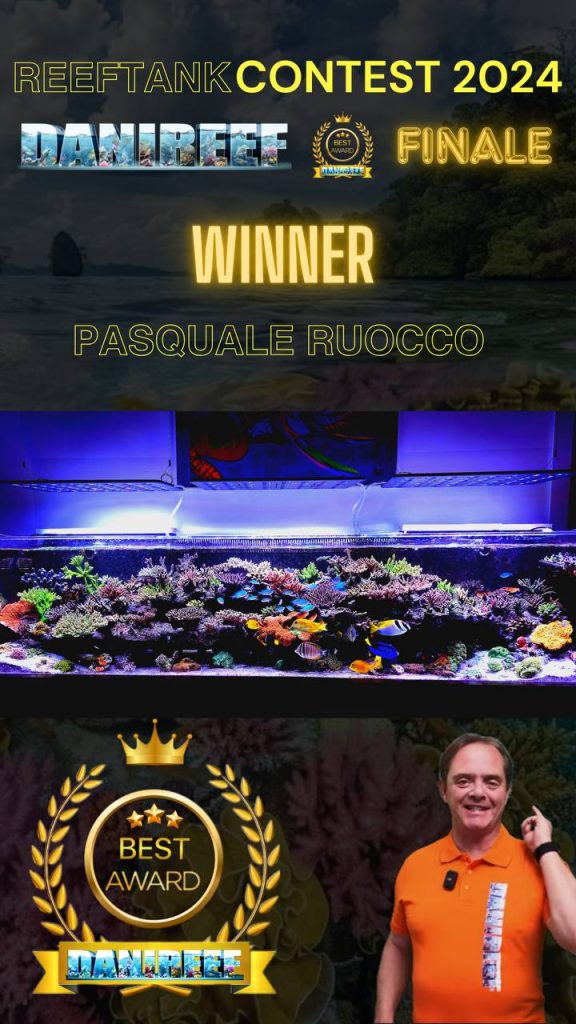
We can only congratulate him since he had the best average vote of the entire contest, the highest number of total votes, that he also won the special ranking that we of the DaniReef staff have drawn up, as well as obviously the actual contest. And I must say that he deserved all the prizes. To relive the contest you can follow all the articles we have written, but now let’s move on to tell you about the aquarium.
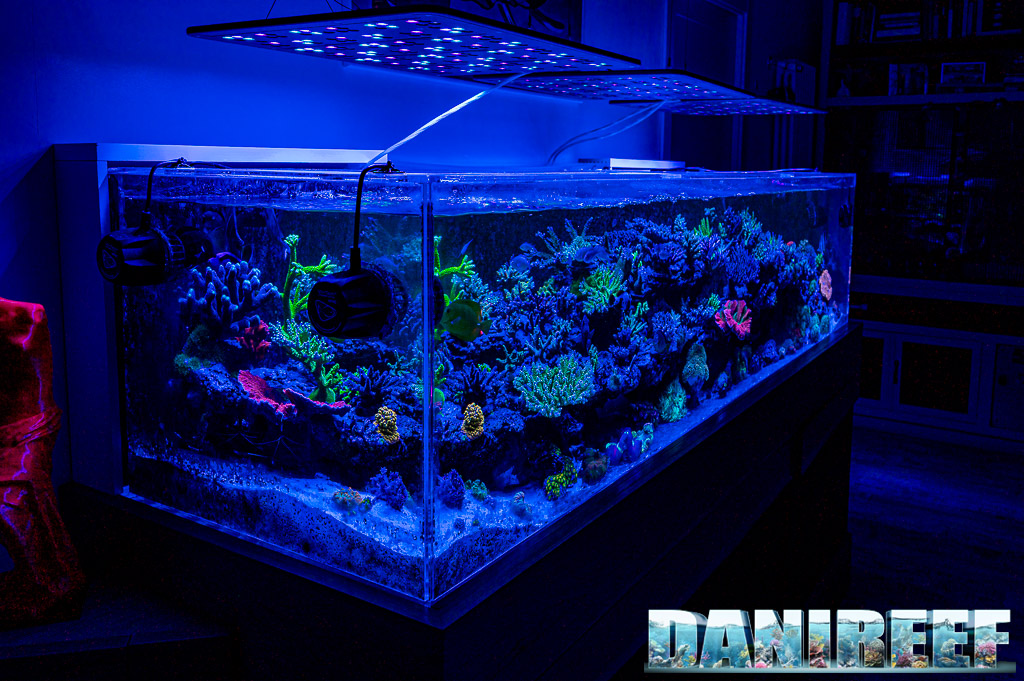
Pasquale Ruocco’s (Incredible) Aquarium Technique
As we mentioned, the aquarium has a gross capacity of 726 liters due to the tank’s dimensions of 220x60x55(h) cm and is entirely constructed of acrylic by APO Reef. The glass thickness is 12 mm with an 8 mm perimeter frame. The technical setup isn’t underneath the aquarium but in a dedicated technical room behind the aquarium. The system is managed using the Balling method with dosing pumps. The parameters are automatically measured by the Apex Trident system, which, of course, also manages the aquarium. A lot of light—over 1,100 PAR—and a lot of water movement complete the setup of this spectacular aquarium. But let’s go into detail because the techniques and choices are textbook-worthy.
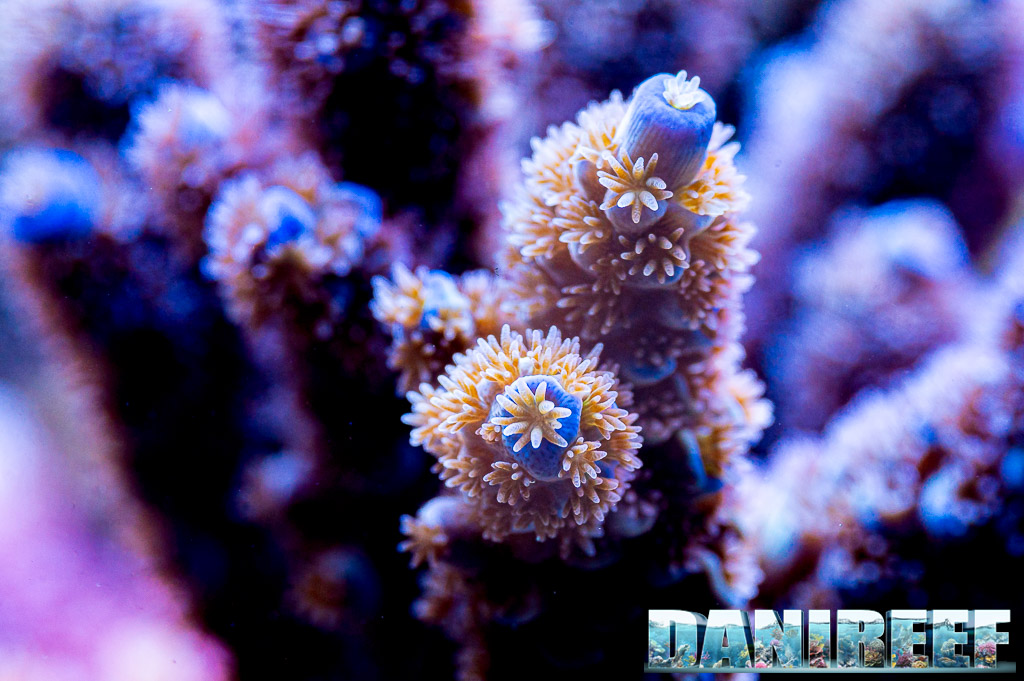
Lighting: ATI STRATON PRO
We always say that lighting is the heart of every marine aquarium. And it couldn’t be otherwise because light is energy, it’s oxidation, and anyone who says otherwise is lying. That’s why Pasquale chose to use three ATI Straton PRO lights. The lighting is very white and neutral, as you can see from the photos, but especially from the video, which made it easy to photograph the aquarium while still delivering PAR levels never before seen in an aquarium. We’re talking about peaks of almost 1,100 PAR at the top of the rock structure with values of around 350 PAR on the sand. That’s a lot, a whole lot of light.
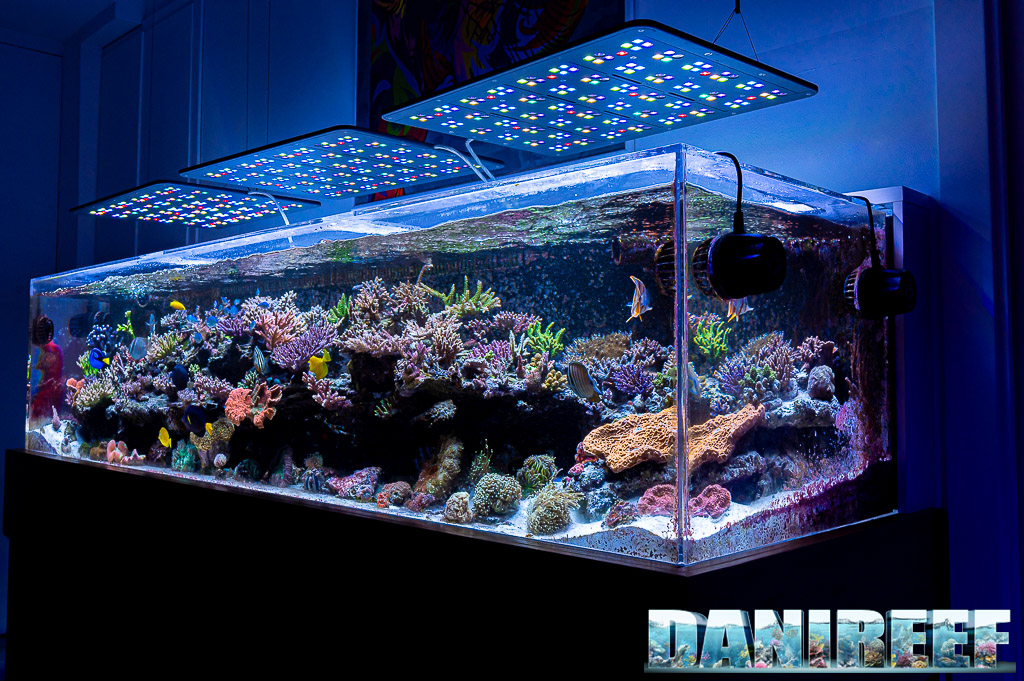
We measured the values with our Apogee Quantum Meter MQ-510. And it’s the first time we’ve reached the threshold of 1,100 PAR. The photoperiod is spread over 12 hours total, with 9 hours at peak values, while dawn and dusk are at about 60% power, gradually increasing and decreasing respectively.
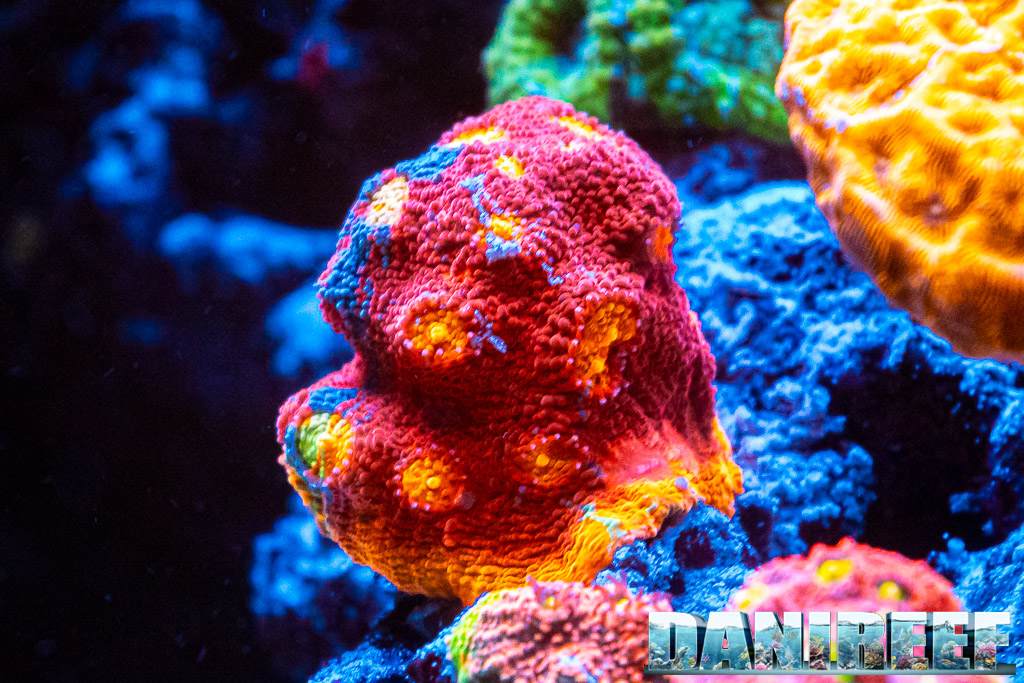
To give you an idea of what these numbers mean, we can refer to which is in the wild, where we can find that such power, about 1,100 PAR, is found about 4 meters from the water surface. A result I personally had never measured in any aquarium before.
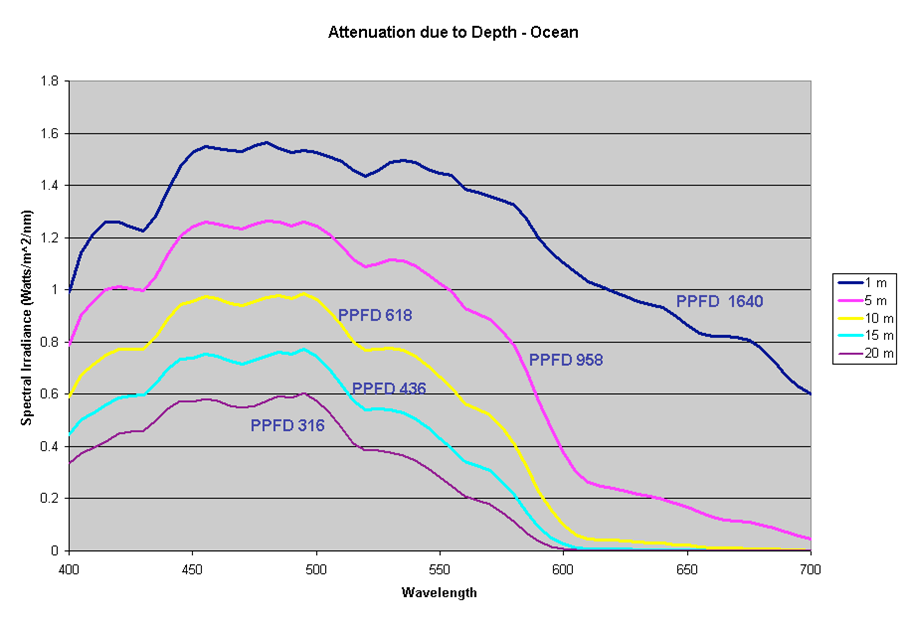
For those of you who want to replicate Pasquale’s setup and have the ATI Straton Pro, you can set your lights at their peak with the following parameters:
- Ultraviolet: 41
- Violet: 100
- Royal Blu: 255
- Blue: 255
- Cyan: 255
- White: 255
- Red: 61
During dawn and dusk, at 60% power, the values are as follows:
- Ultraviolet: 105
- Violet: 255
- Royal Blu: 255
- Blue: 255
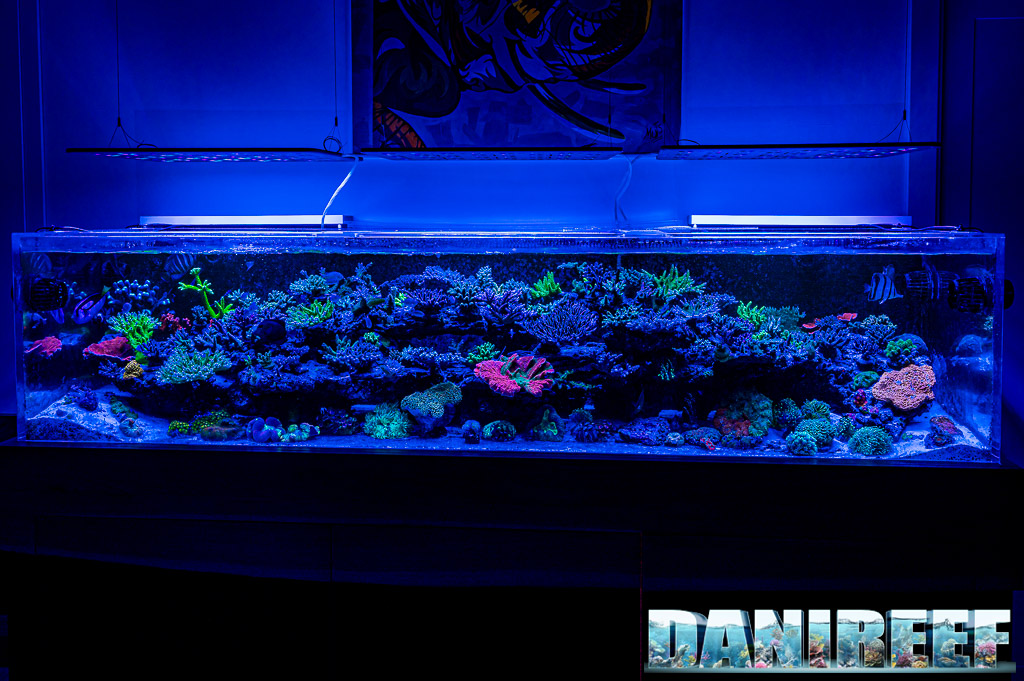
The Skimmer and Return Pump
The skimmer and return pump must be analyzed together because the pump’s sizing depends on the skimmer used. In this setup, however, the numbers are much more complex because the return pump isn’t affected by the head loss of a sump placed at floor level. The skimmer used is a Royal Exclusiv Bubble King 250 Double Cone with a Red Dragon pump, a skimmer rated for 2,500 l/h of treated air and 6,500 l/h of treated water.
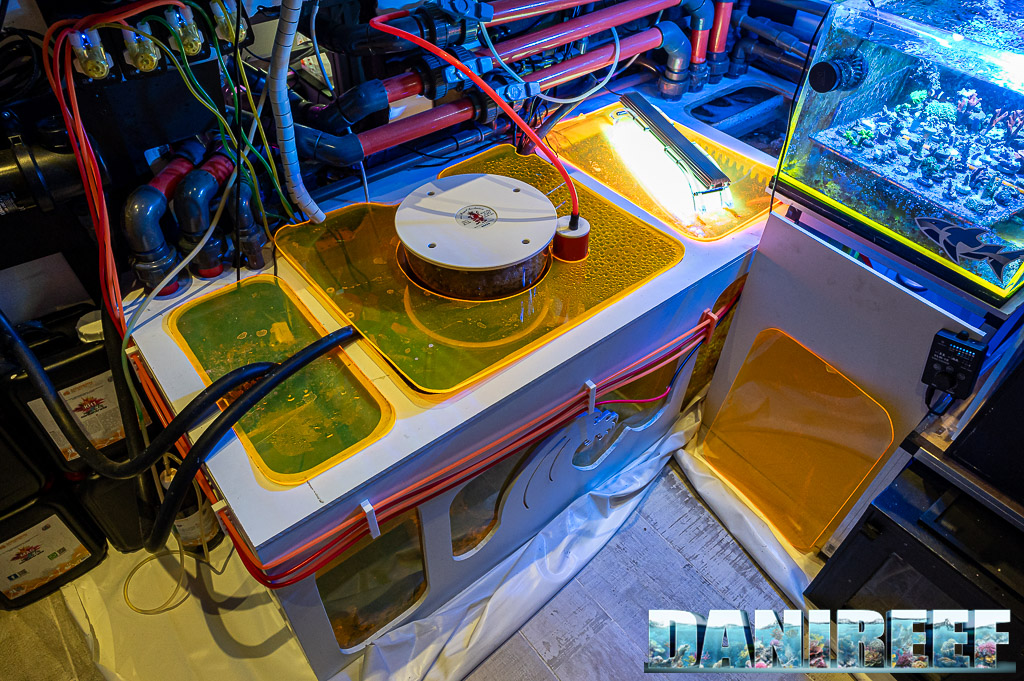
The skimmer is connected to a CO2 Scrubber, which allows the pH in the aquarium to be raised by indirectly acting on the air intake.
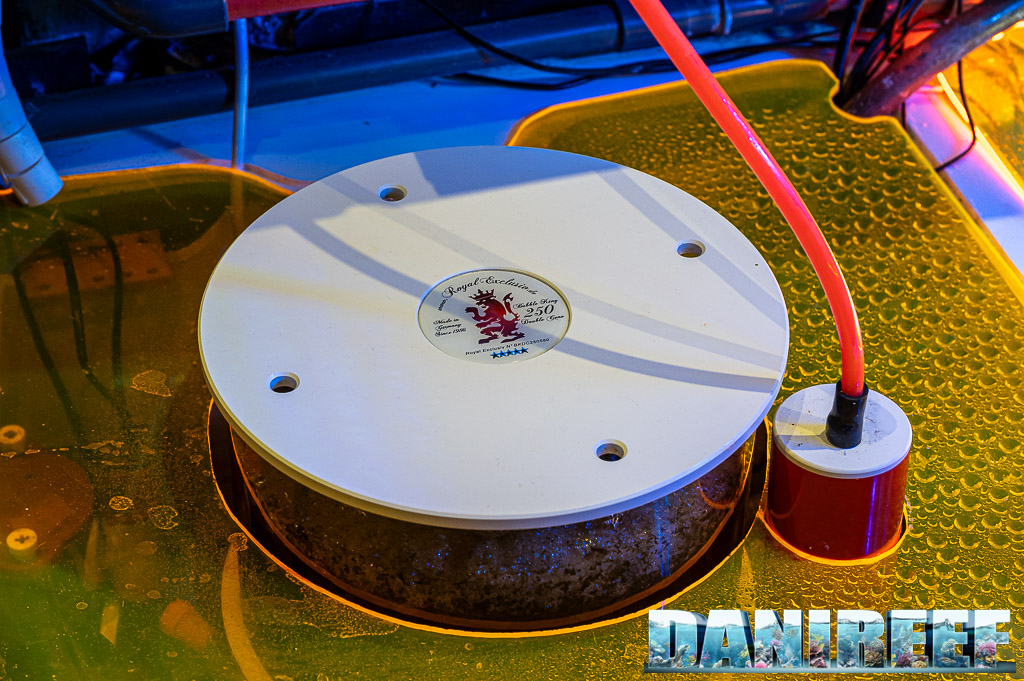
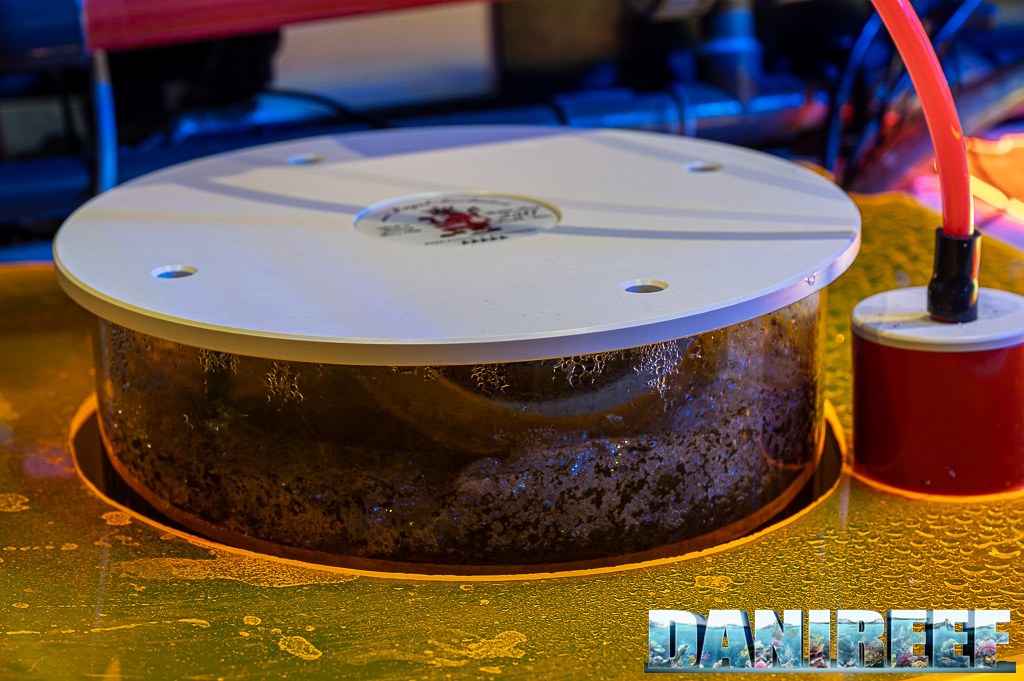
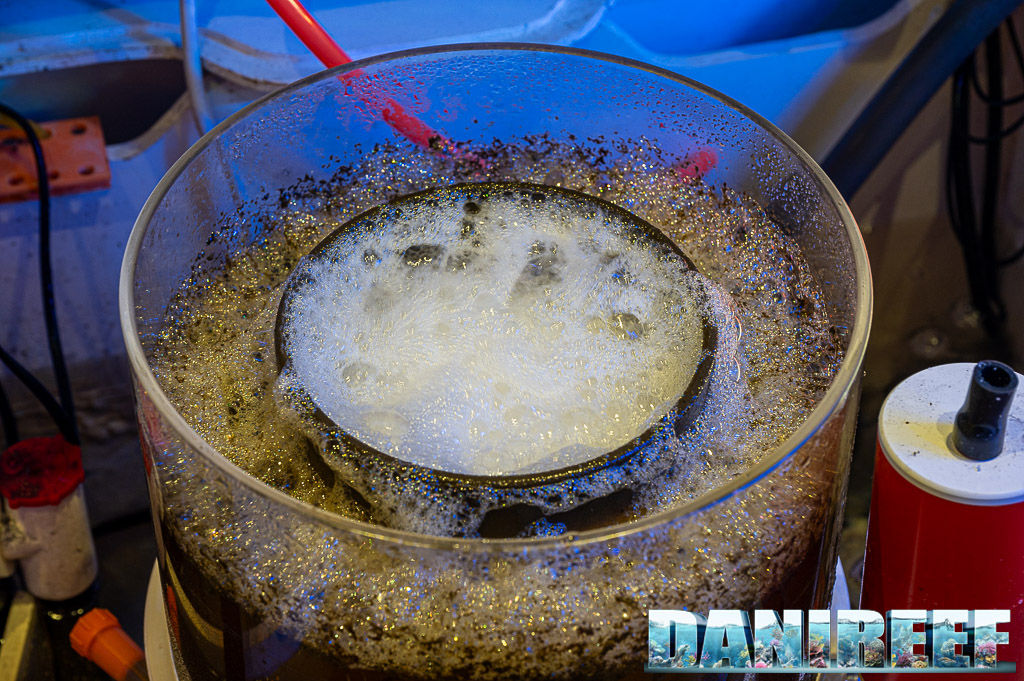
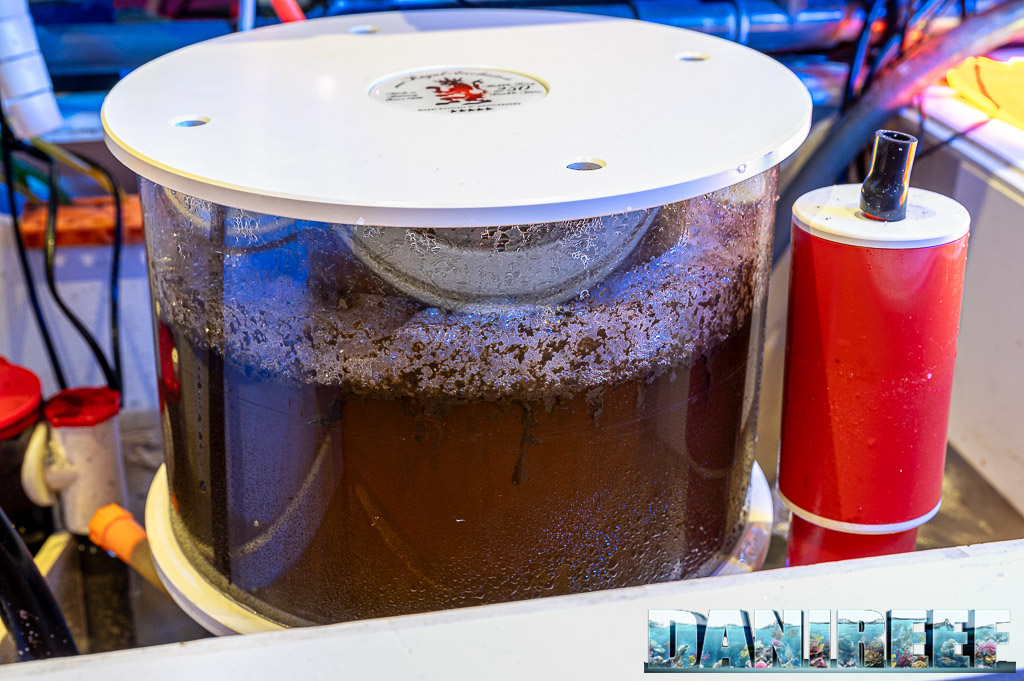
The numbers are impressive, but the pumps that power this system are two—or rather three. Specifically, there are two return pumps. We’re talking about two Ecotech Marine Vectra M2 and L2 pumps. Both are kept at 35/40% overall power, with the more powerful L2 (11,500 l/h, 6.5 m, and 130 watts) placed about 2 meters from the sump, while the M2 (7,500 l/h, 6.5 m, and 80 watts) is closer. This means about 7,600 l/h of total flow at a head height of 6.5 meters.
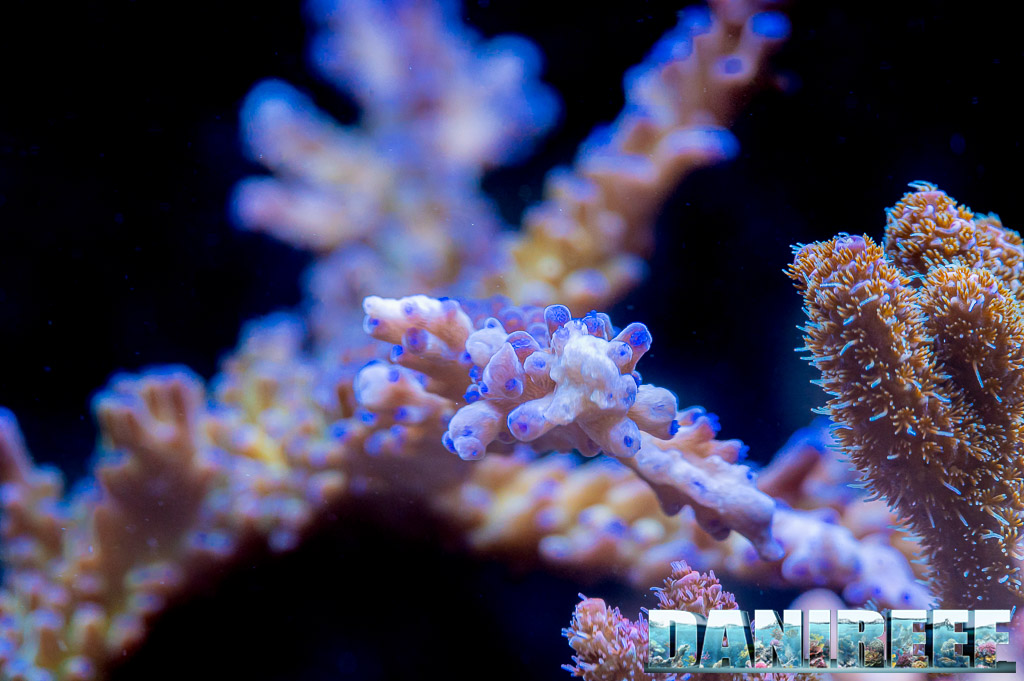
But the return pumps don’t end there because Pasquale also uses an Aqpet DC 4.0 pump (4,000 l/h, 3.5 m, and 35 watts) to manage the Teco TK 500 chiller, the frag tank, and the refugium, using a single pipe with three branches and shut-off valves to regulate the flow according to the requirements of the various components. We can comment by saying that the system appears to be very well-balanced. It may sound like a cliché, but it’s not.
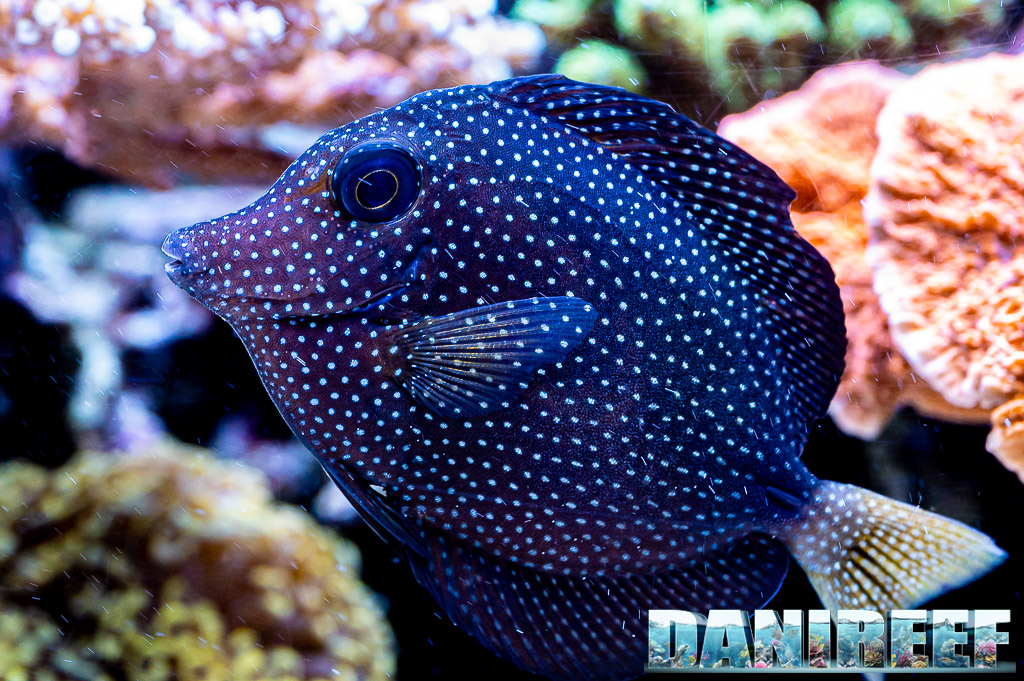
Water movement in the tank
To manage water movement in the tank, Pasquale chose four Ecotech Marine Vortech MP40 pumps. We’ve always called them the queens of pumps, and Pasquale has set them to Reef Crest mode at 45% maximum flow. The pumps can produce a flow rate of 17,000 l/h and operate in pairs. In terms of flow rate, we’re talking about an alternating flow of approximately 15,300 l/h in a tank of 726 liters gross capacity. This gives us a flow rate equivalent to 21 times the volume of the aquarium, which is perfect for SPS corals. As we mentioned, this aquarium is a reference point.

Everything else we find in the sump
As you’ve seen, Pasquale has a technical room dedicated to the aquarium, let’s try to give you a partial view of what’s in this dedicated corner. What stands out, aside from the large sump and all the connecting pipes, are the huge refugium and frag tank, as well as the Apex management system, including the Trident system for automatically measuring the triad (calcium, magnesium, and alkalinity).
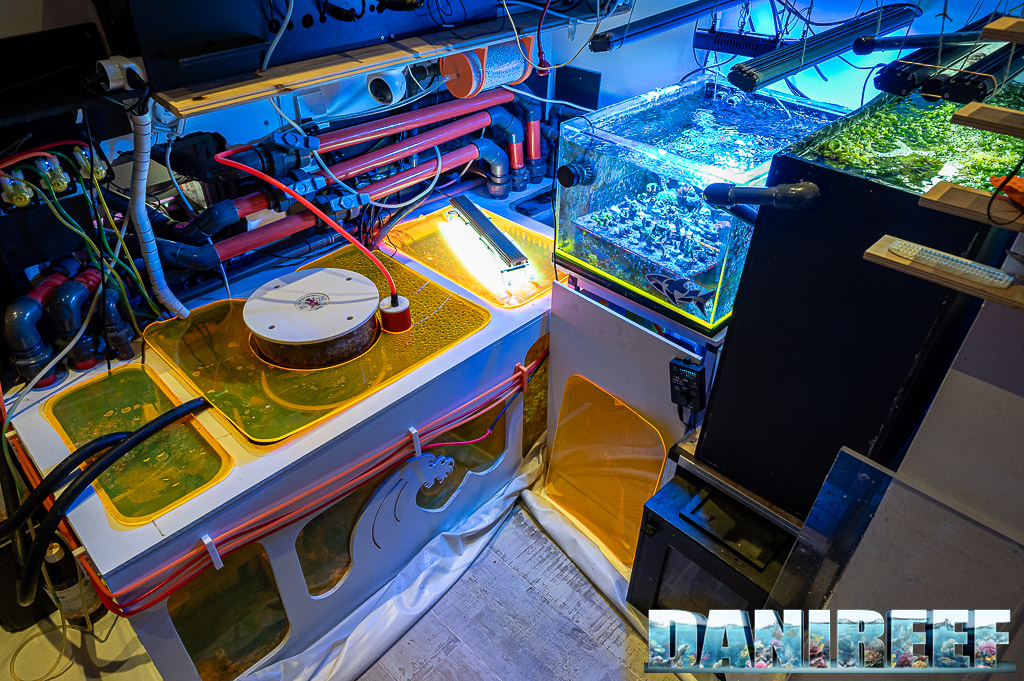
What’s striking about the sump of this beautiful aquarium is that it’s incredible organized and absolutely packed with equipment. There’s also activated carbon, which Pasquale changes every week.
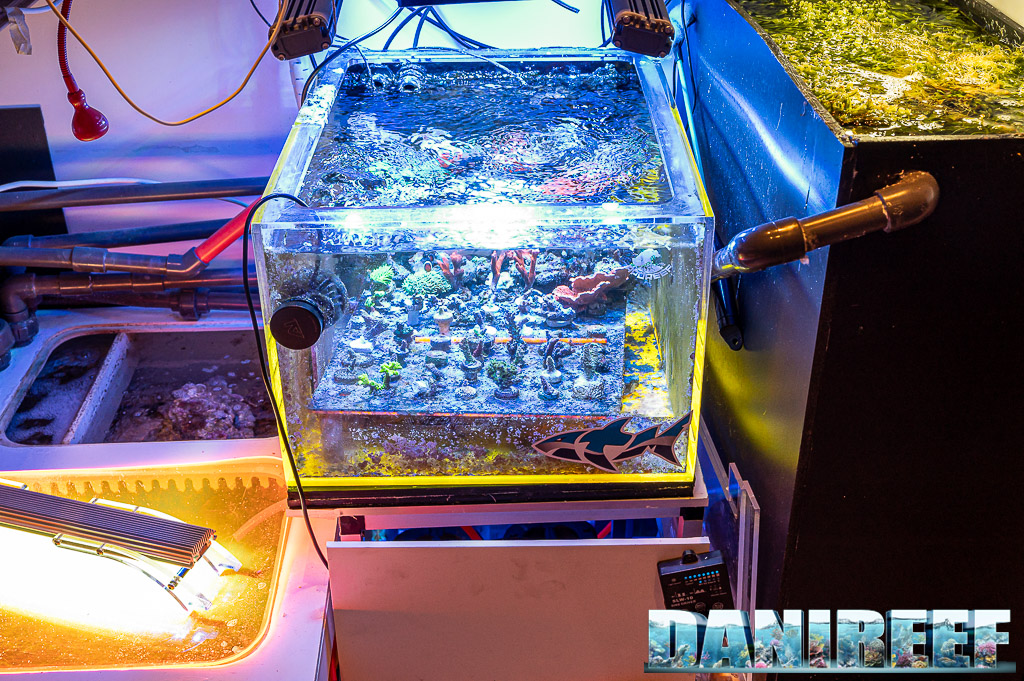
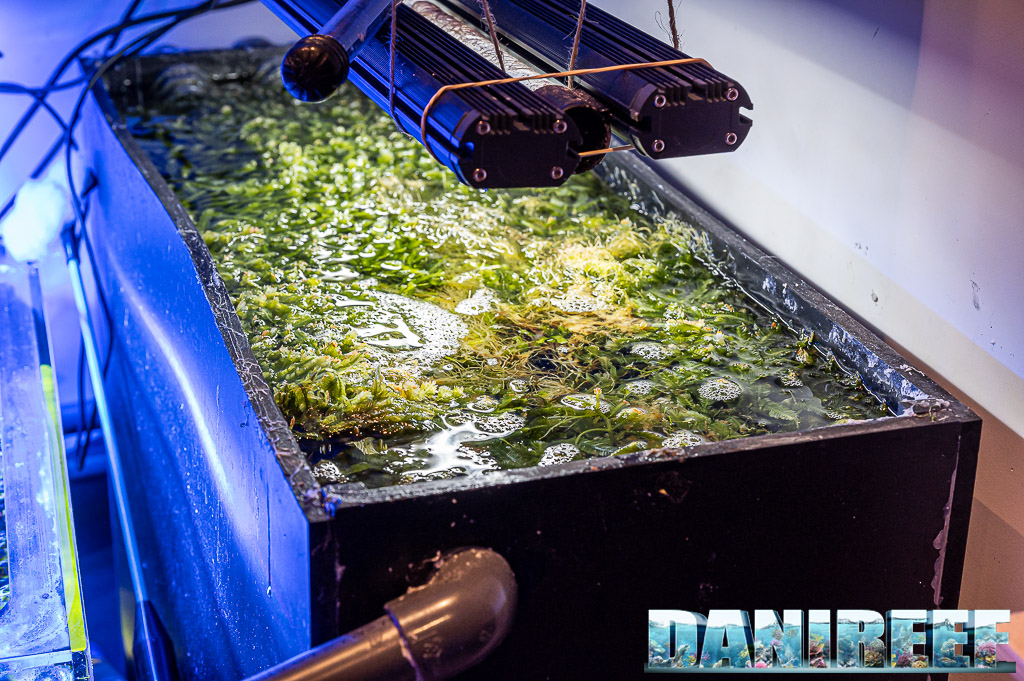
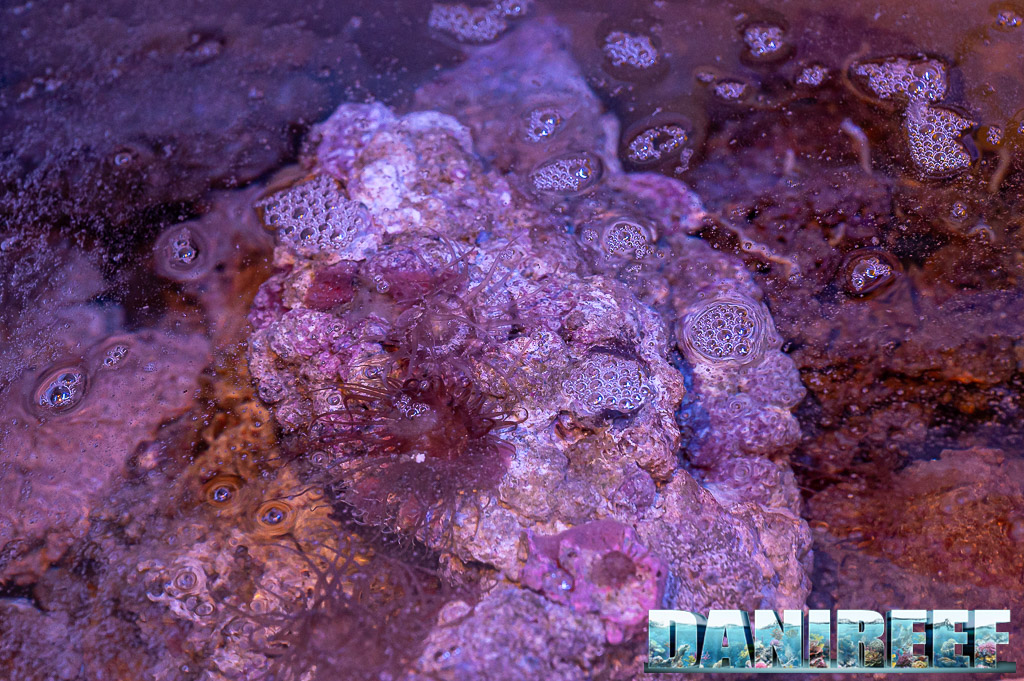
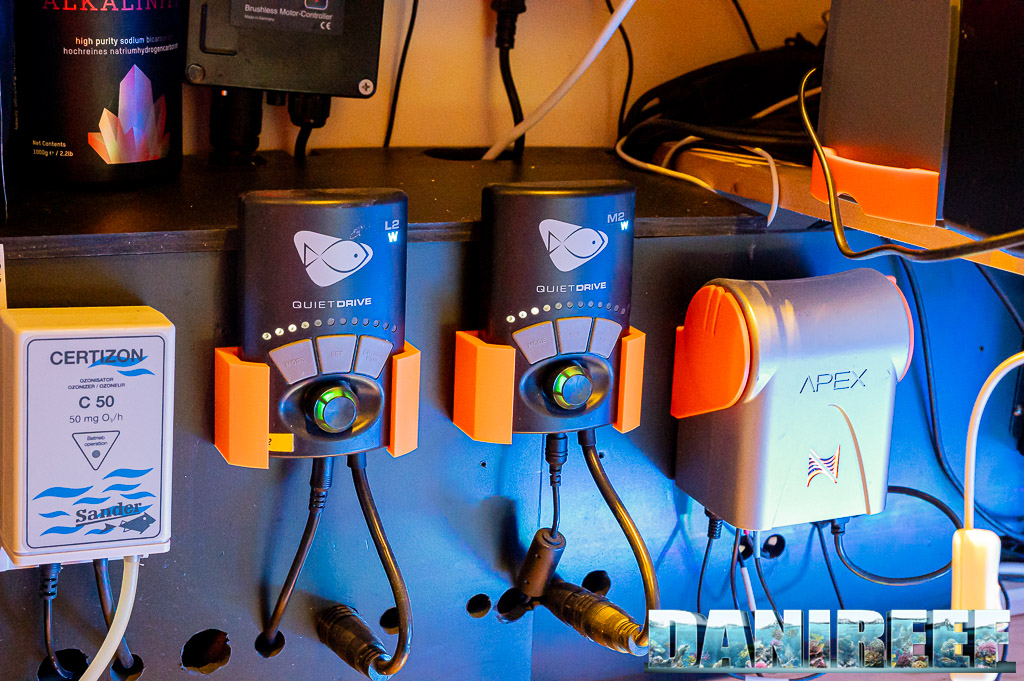
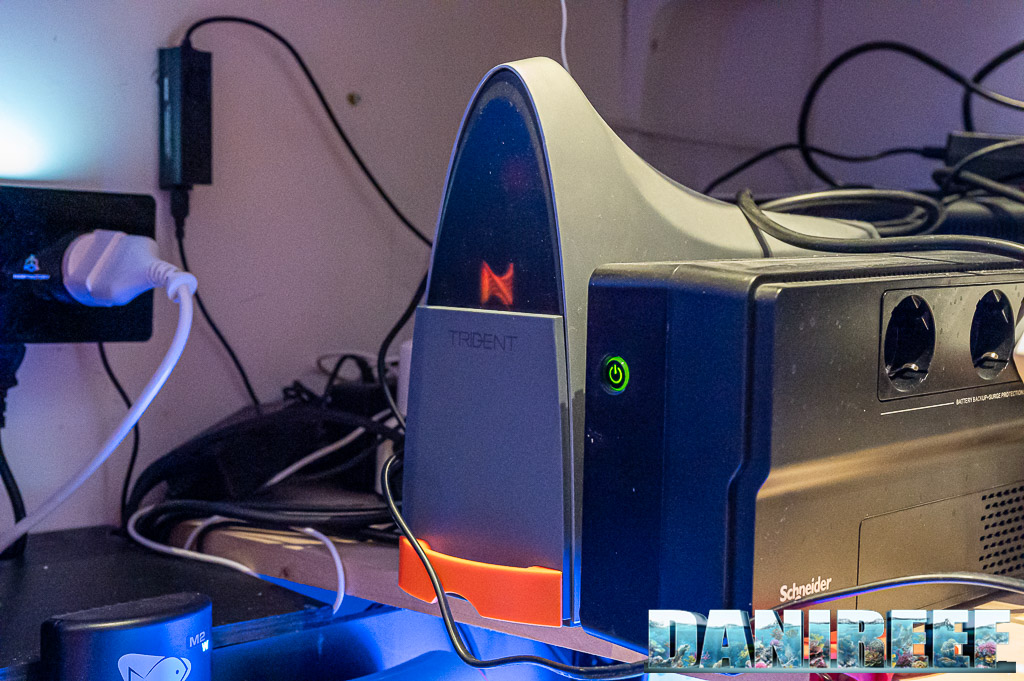
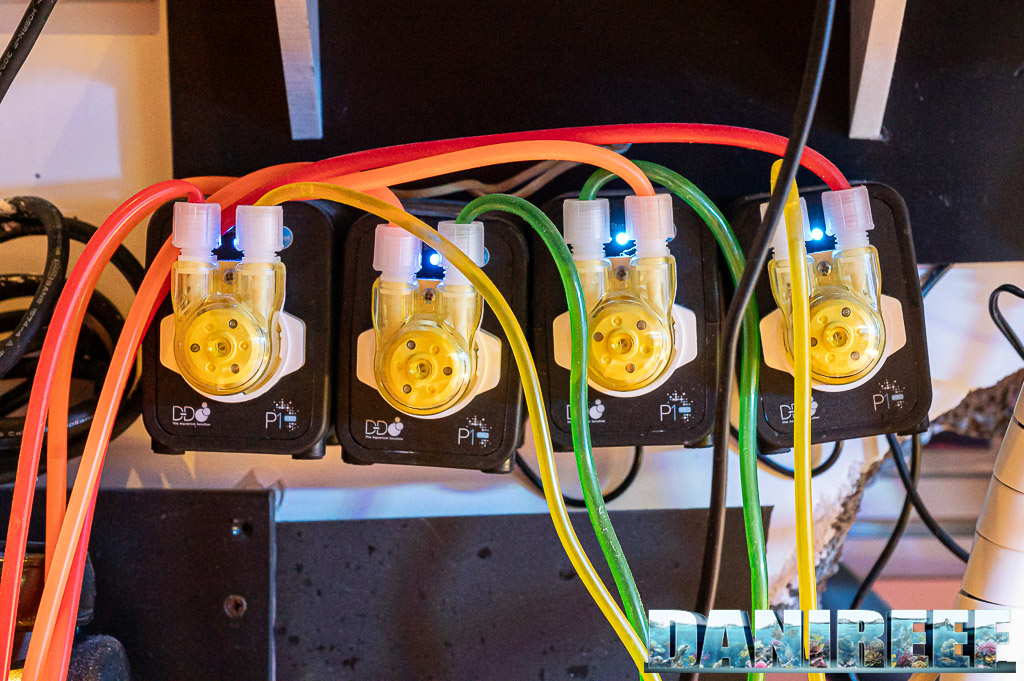
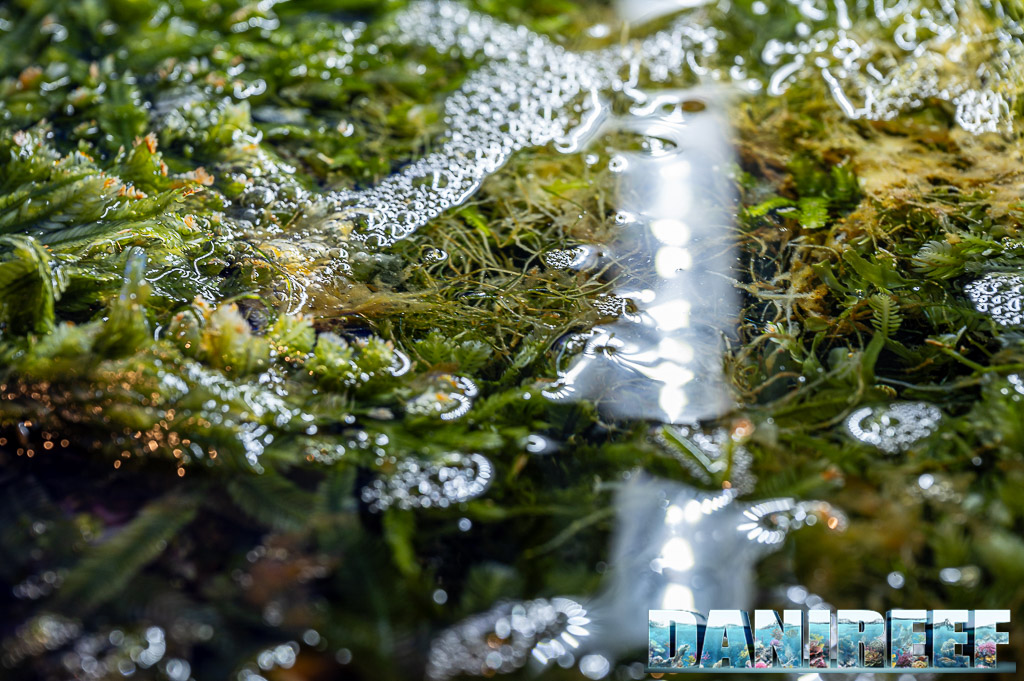
What caught my attention are the plexiglass covers placed over the sump, as seen in the photos, but also on the aquarium. This helps reduce heat loss in winter, improving energy efficiency. Of course, you have to watch out for condensation to ensure the light isn’t completely blocked, but apart from that, the covers also reduce evaporation and the need for top-offs. My curiosity is mainly about using covers on the aquarium itself, while I think it’s a fantastic idea for the sump. Weekly evaporation is limited to about 40 liters, which is extremely low for the size of the aquarium.
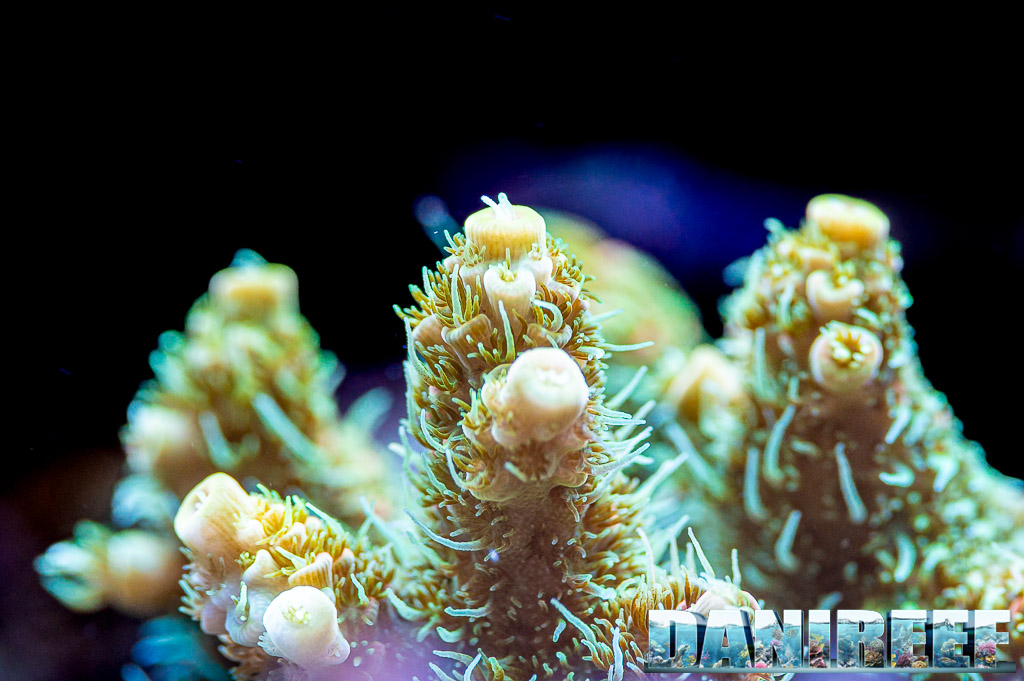
The biological part of the aquarium
To manage the essential biological cycle in the aquarium, Pasquale started with about 10-15 kg of Marco Rocks synthetic rocks, but the rest are all live rocks, including those in the algae refugium and the sump. This setup ensures a powerful biological action, which is fundamental for managing a marine aquarium. In addition to the rocks, the sump also contains 36 blocks. Meanwhile, the refugium hosts Gracilaria, Chaetomorpha, and Caulerpa taxifolia algae.
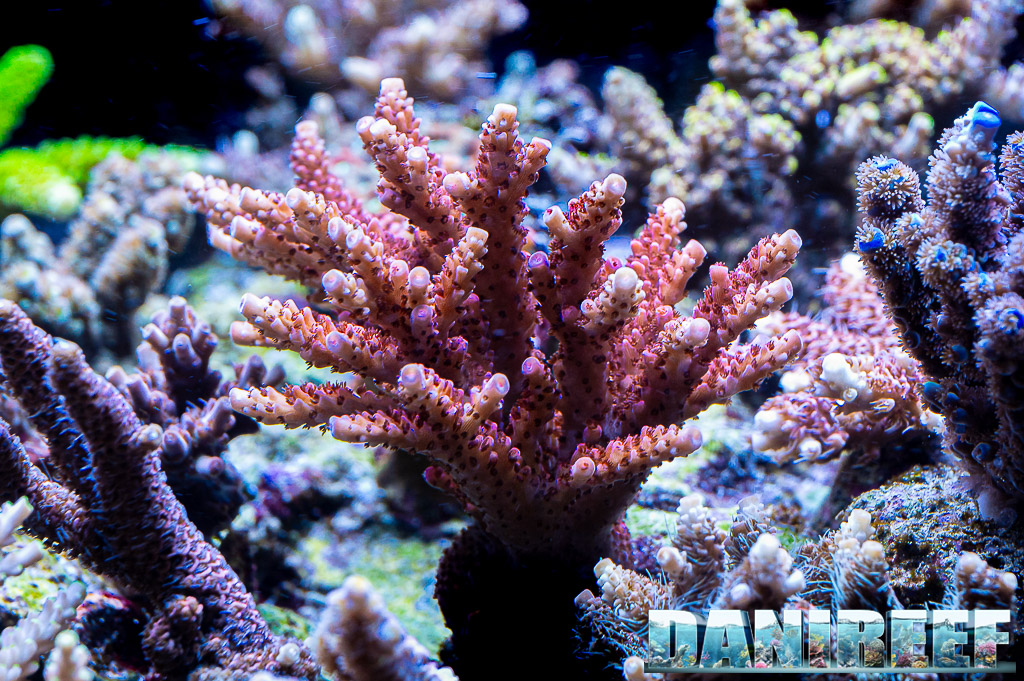
In total, there are approximately 70 kg of rocks in the aquarium, another 70 kg in the sump, and about 30 kg in the refugium, making a total of around 170 kg of rocks for a water volume of about 1,200 liters. This translates to a ratio of 1 kg of rock for every 7 liters of water.
In the sump, the management of the rocks is handled by a so-called “cryptic zone,” which Pasquale strongly supports.
Aquarium Management with BEA Bacterial Protocol – Bio Engineering Aquaculture
The entire biological aspect is managed using products from BEA, Bio Engineering Aquaculture with extensive use of the BEA Aequilibrium kit. This is a series of four products containing over 30 different bacterial strains, enzymes, trace elements, and essential nutrients. It’s a complete product that goes beyond just bacterial management.
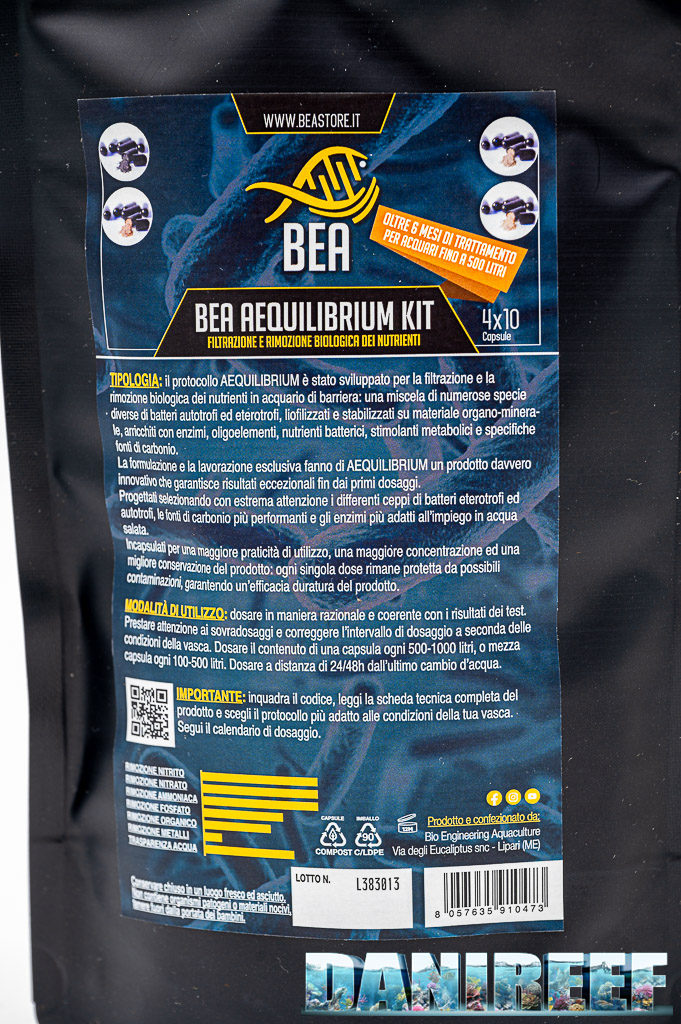
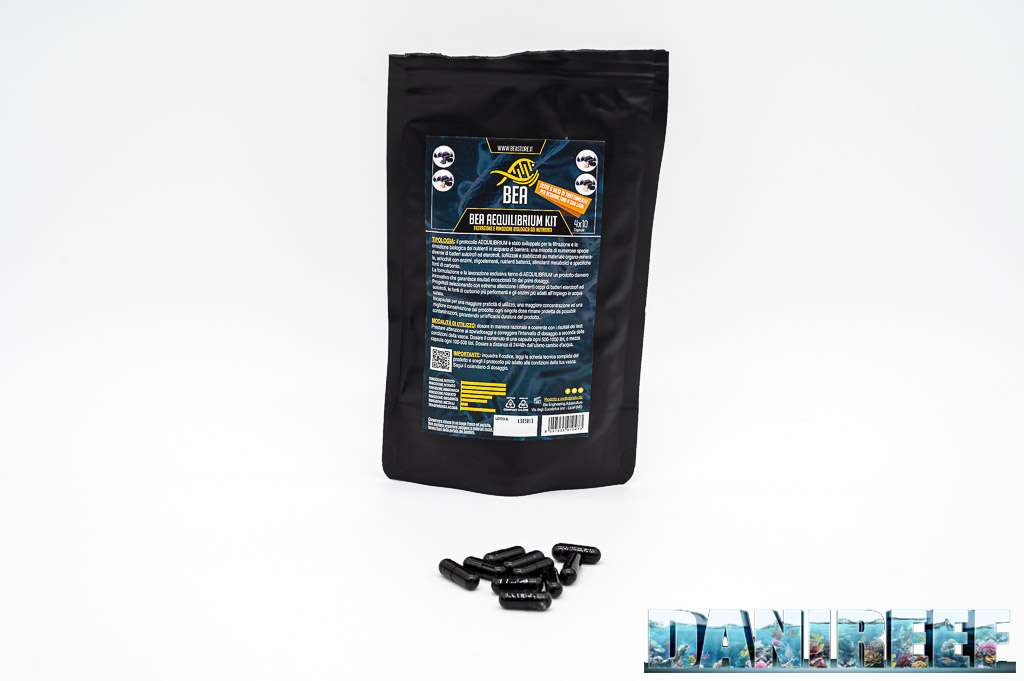
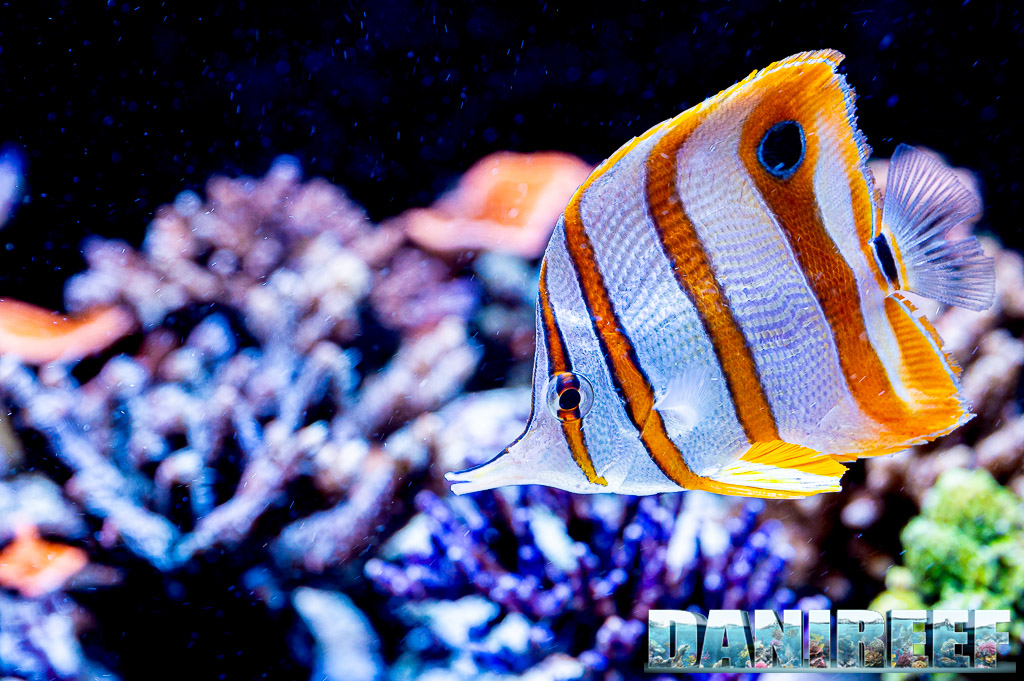
In addition to using bacterial products, Pasquale also makes extensive use of Bea Resolve. Technically, we’re talking about a mixture composed of carbonates, zeolites, clays, and other micronized minerals, making it perfect for purifying the aquarium. By combining the distinct properties of the minerals it contains, its primary characteristic is to aggregate and flocculate biofilms, bacterial colonies, cyanobacteria, heavy metals, and more.
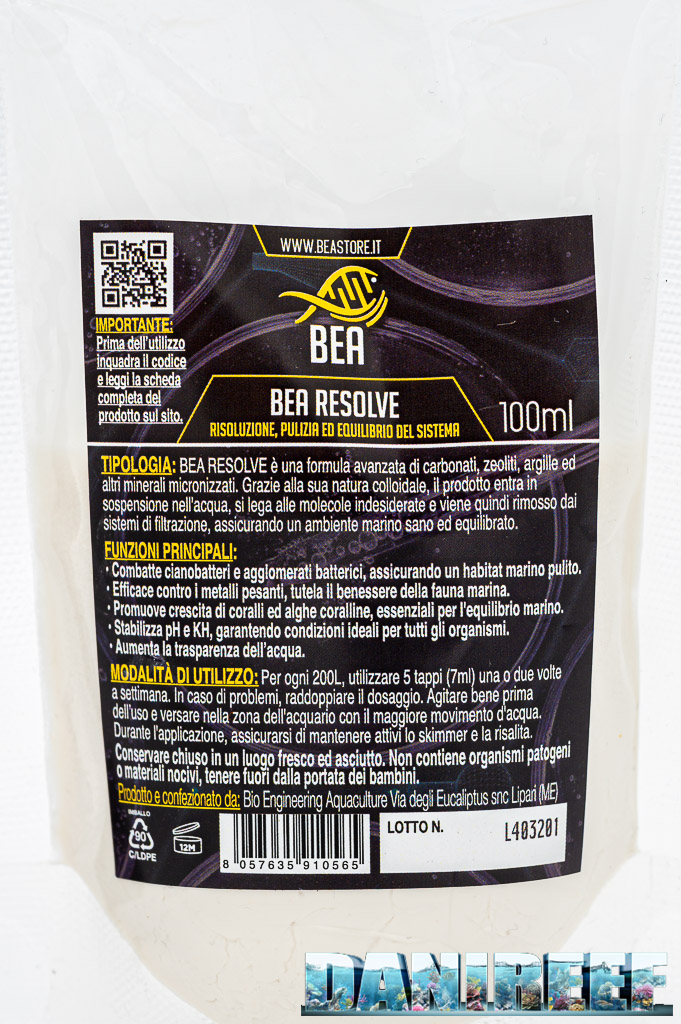
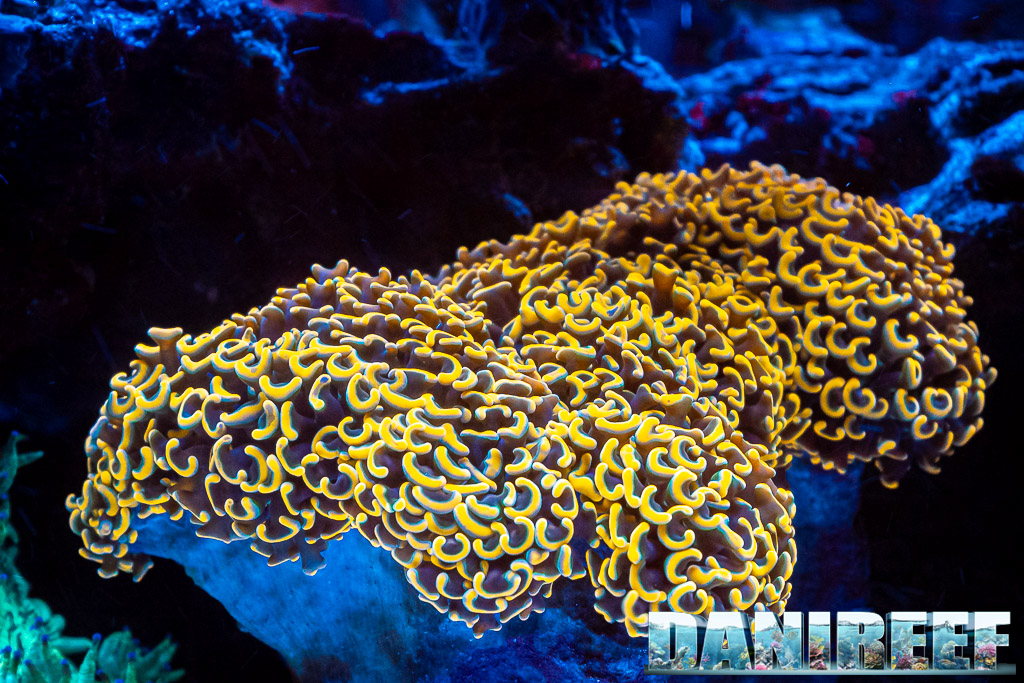
Restore the triad and trace elements through the Balling system
Pasquale manages carbon and micro/macro element supplementation through the Balling system, using a series of D&D P1PRO dosing pumps with Kamoer heads. The four supplements are: Base KH1, Base KH2, Base CAL, and Base MAG. In addition to Calcium and Magnesium, two KH solutions containing trace elements are added to complete the spectrum of trace elements.
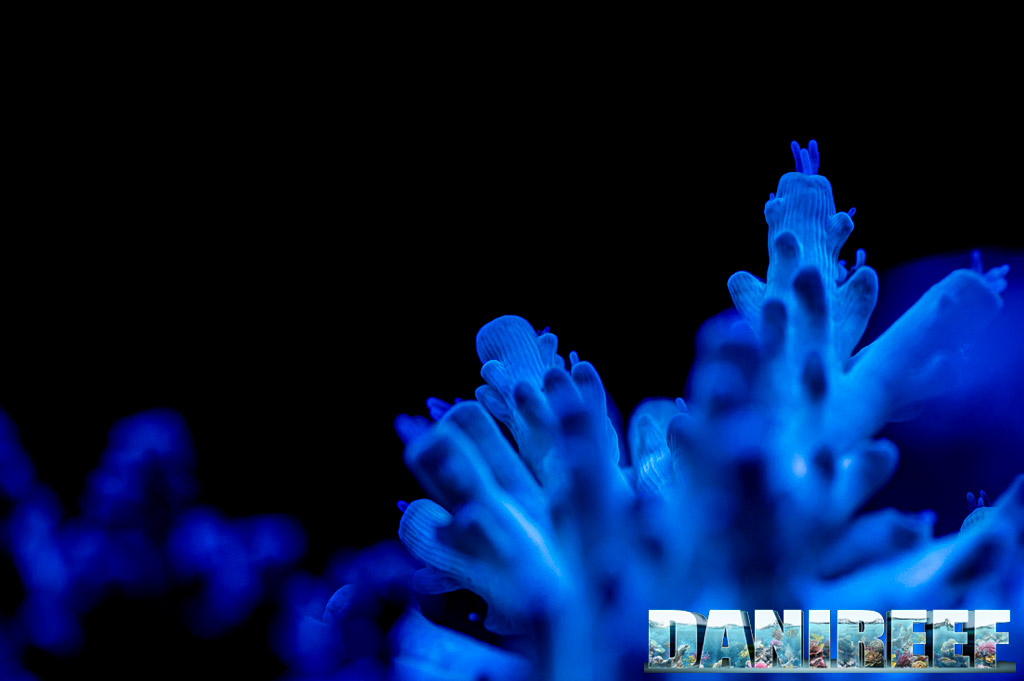
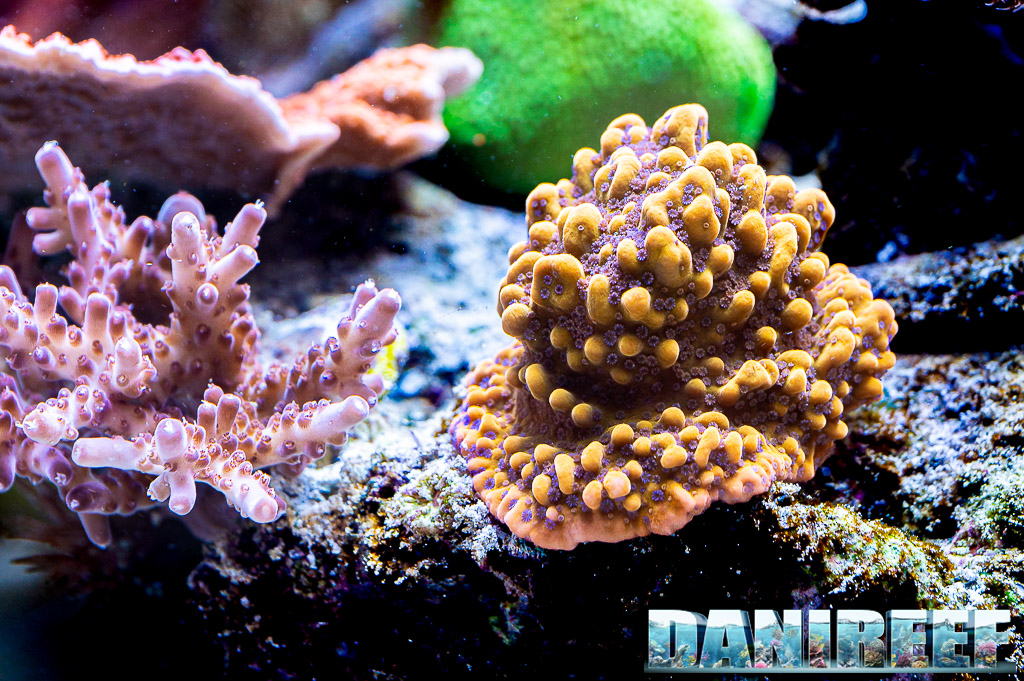
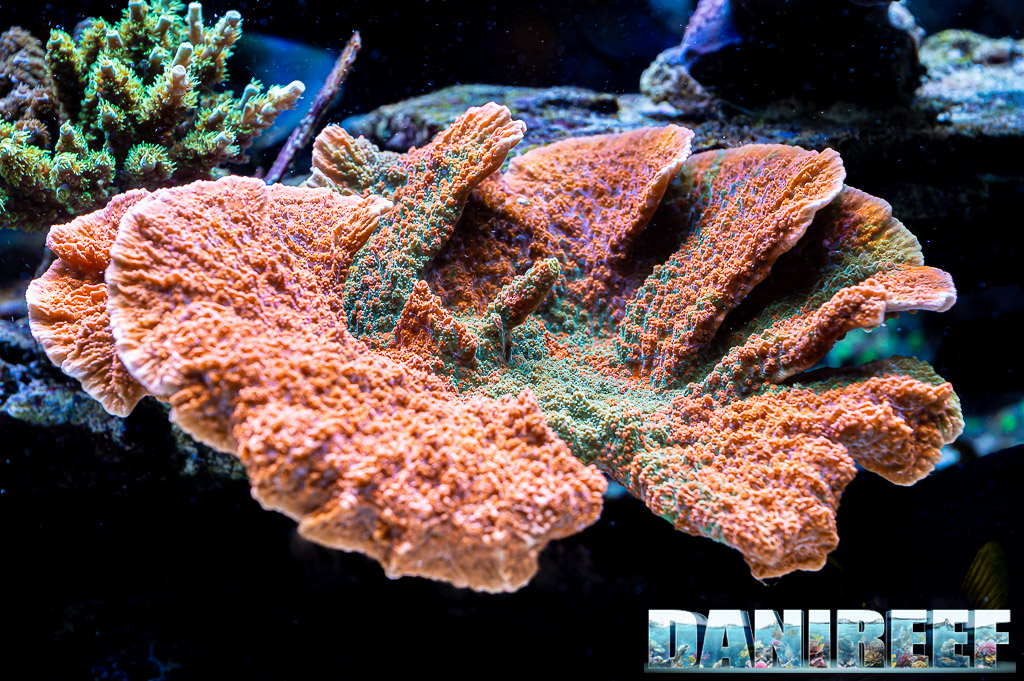
This is, in fact, a mixed Balling system where amino acids and other micronutrients are added to the base elements to complete the system. In addition to these products, Pasquale also adds N+ and P+ to increase the concentration of nitrates and phosphates to the target reference values.
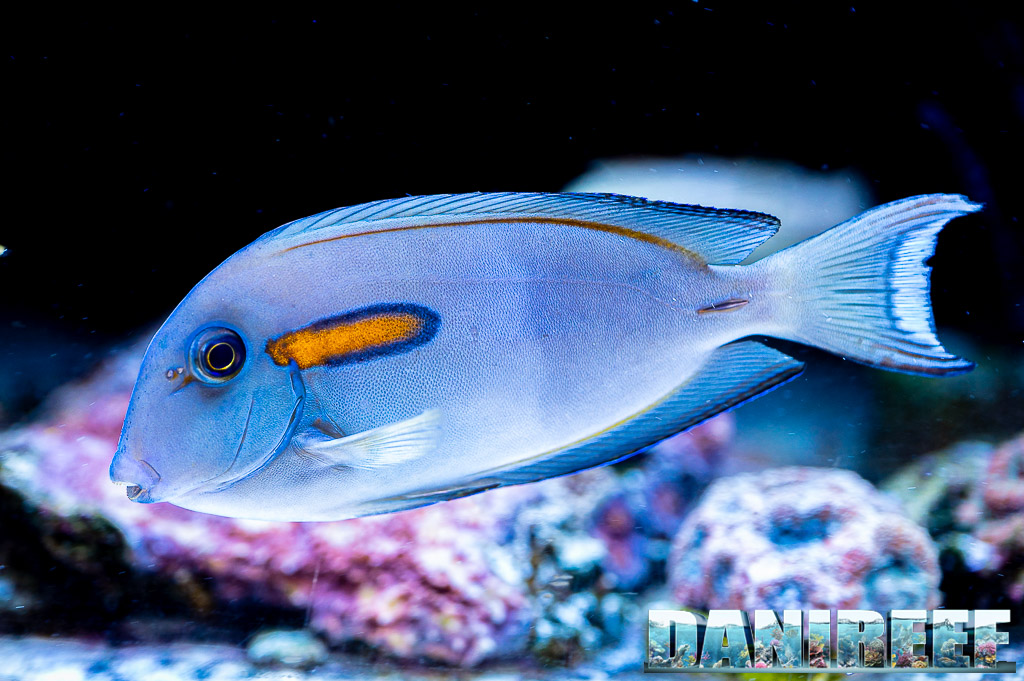
Water changes are significant, at about 120 liters per week, which, considering the total volume of the aquarium, equates to a 10% water change every week. The salt used is from Modern Reef.
To monitor the water parameters, an ICP OES test is conducted about once a month, and any missing trace elements are replenished, or corrective actions are taken if trace elements are found in excessive concentrations. The ICP brand changes every time.

Water parameters
With an aquarium managed with so much water movement, intense lighting, and incredible filtration, we can’t help but discuss the nutrients, even as a reference.
| Element | Value | Reference Value |
| Kh | 6,7-7,3 dKH | |
| pH | 8,1 – 8,4 | |
| Calcium | 390-400 ppm | |
| Magnesium | 1400 – 1450 ppm | |
| PO4 | 0,02 – 0,03 ppm | 0,05-0,08 ppm |
| NO2 | 0,05 ppm | |
| NO3 | 3-4 ppm | 10-15 ppm |
| Temperature | 24,5° – 24,8° | |
| Salinity | 35/35,5 per thousand |
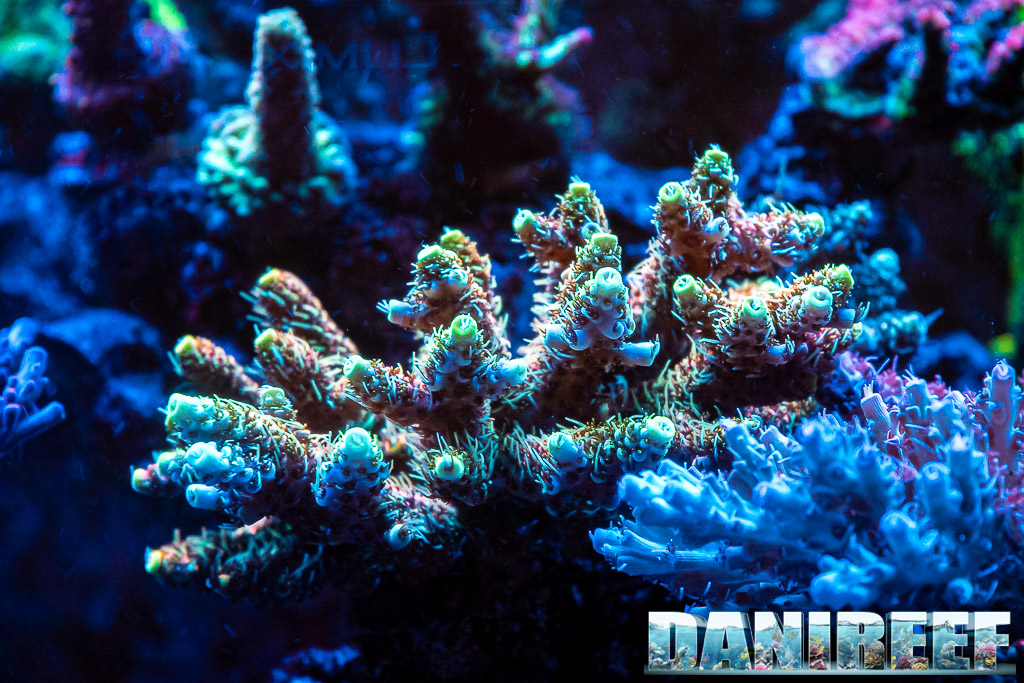
Pasquale believes in providing corals with what they need without pushing elements to stimulate more growth. This is why the values are so close to natural sea levels, avoiding the excesses seen in many other aquariums where aquarists increase calcium and KH to promote faster growth.
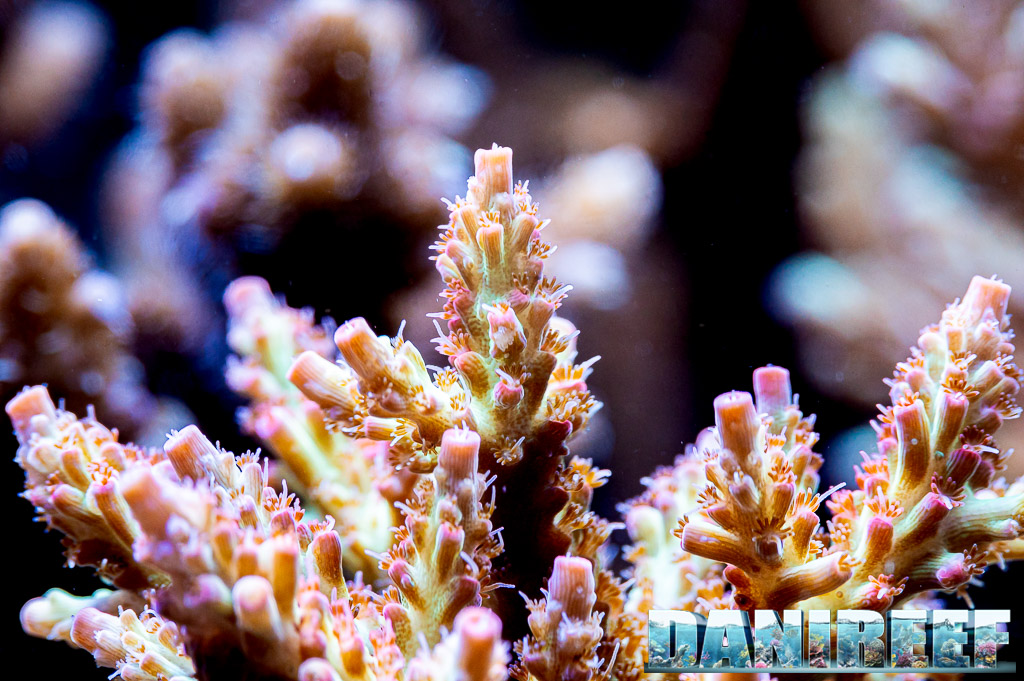
Coral’s feeding
It’s universally accepted that fish need to be fed, but there are still some skeptics about the need for specific coral feeding. Fortunately, Pasquale is not among them and regularly feeds the corals.
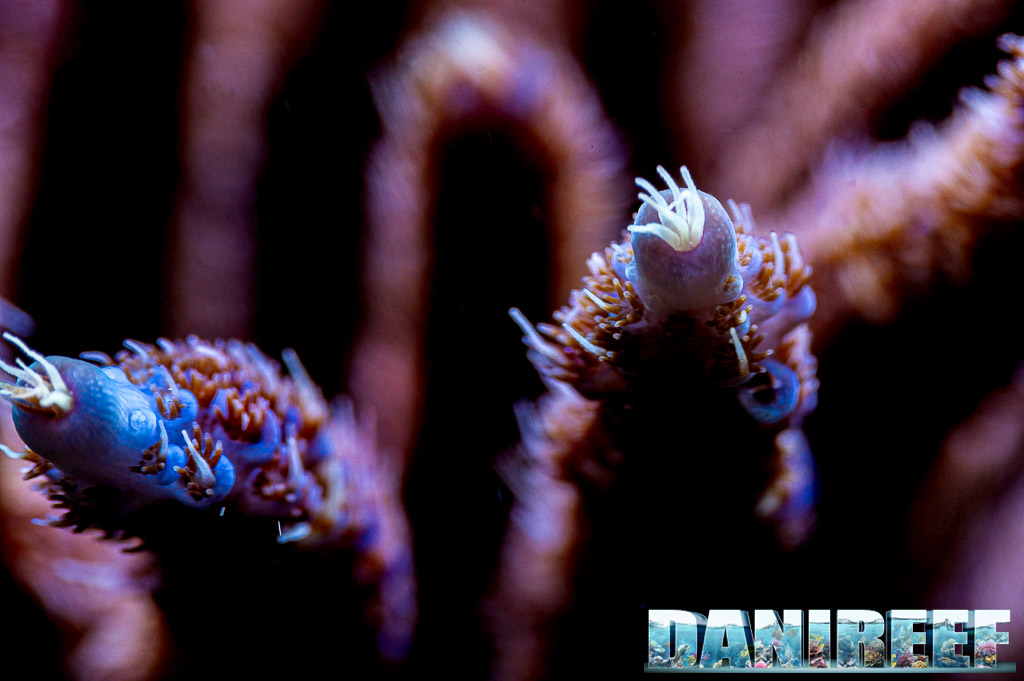
At the time of writing, coral feeding was managed using Modern Reef’s Polypop and Complete Reef Food products, in addition to the benthic life that develops in the aquarium and the large refugium.
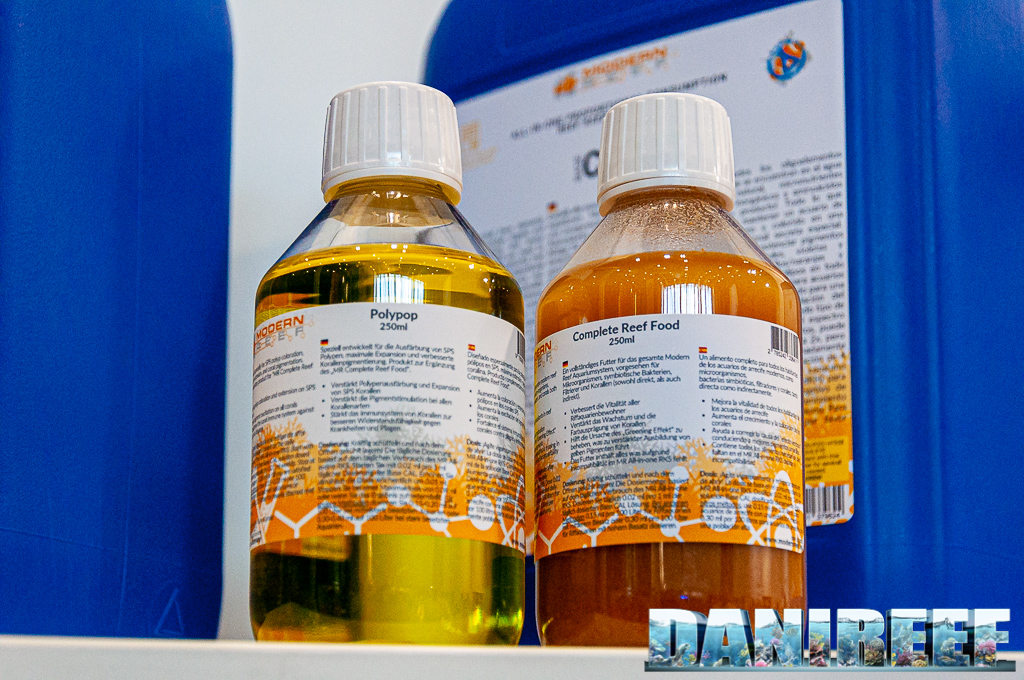
Automation: Apex
In an aquarium of this level, automation is a must, and Pasquale uses the top-of-the-line system. We’re talking about the Apex system with Trident for continuous monitoring of the triad. It’s the best technology available today.

Fish or Corals?
At this point, it’s impossible not to ask Pasquale about his preferences for the inhabitants of his aquarium: fish or corals? His answer is a bit surprising—both. Like me, he appreciates both equally, even though most aquarists tend to prefer corals over fish, often leading to stunning aquariums with incredible corals but very few fish. But as we mentioned, fish produce ammonia, which corals efficiently convert into nitrate, resulting in even more beautiful corals.
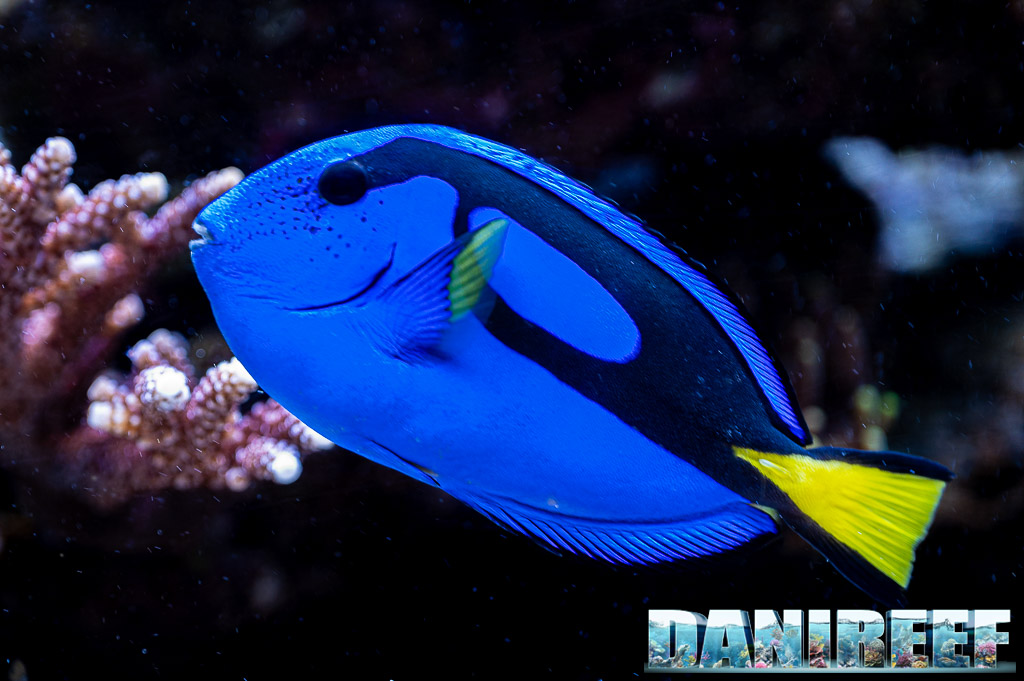
Among all the fish, special mention goes to the Paracanthurus hepatus, which has been with Pasquale since it was just a few centimeters long. Now, after about five years, it’s grown into a large and healthy specimen. There’s also the Rhinomuraena quaesita, or ribbon eel—a spectacular creature that I never expected to see in an aquarium like this.
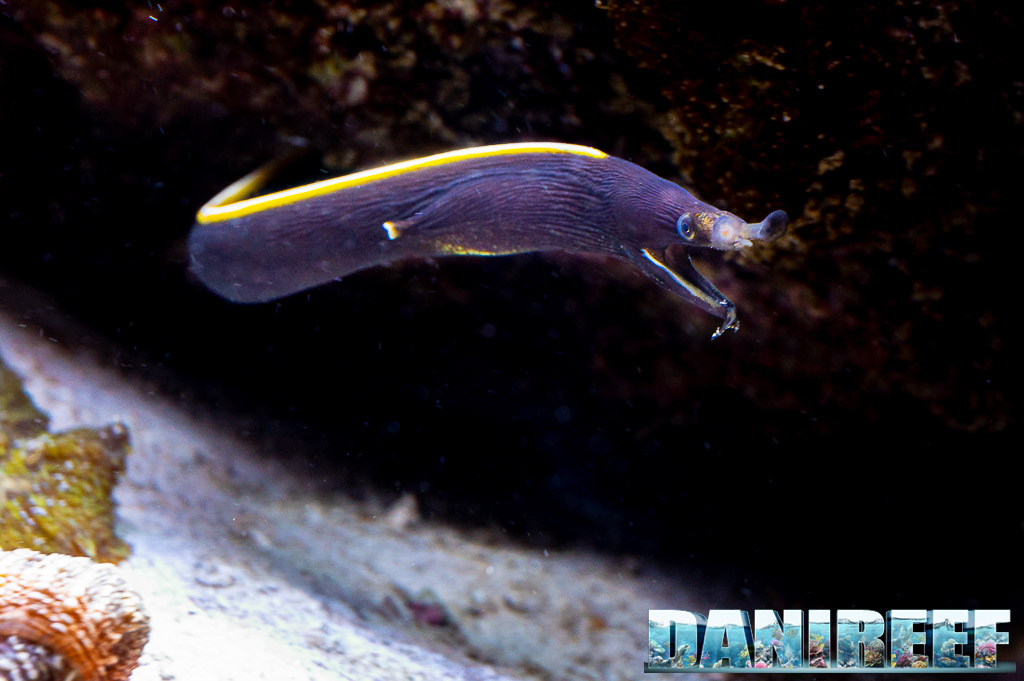
Unfortunately, it’s a rather shy animal and didn’t show itself much during our visit, making it challenging to photograph. But it’s a stunning animal in every sense.
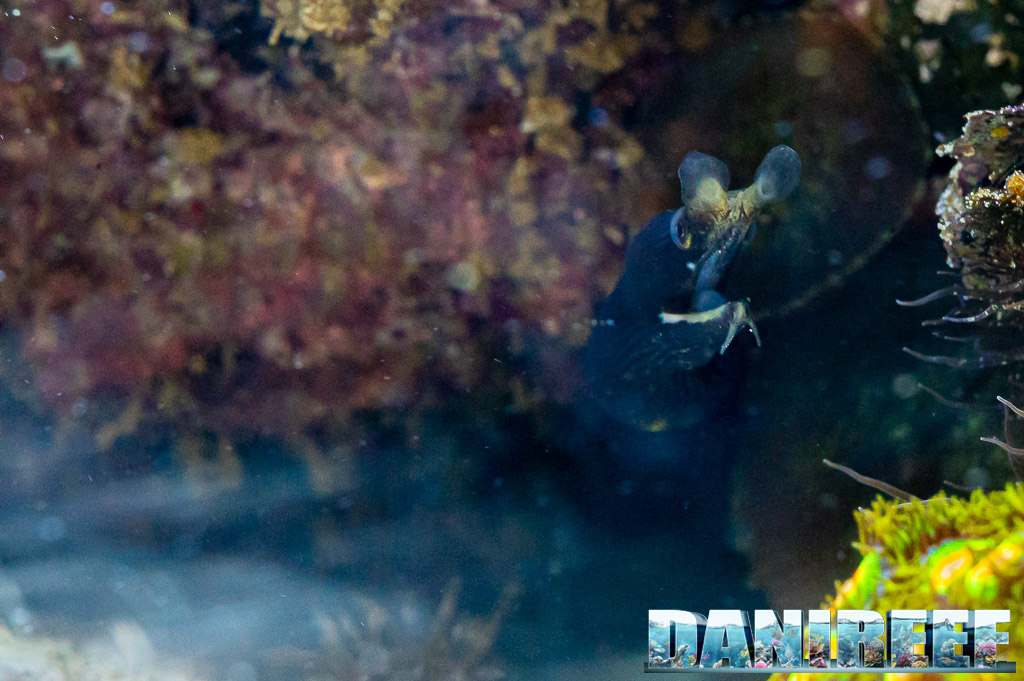
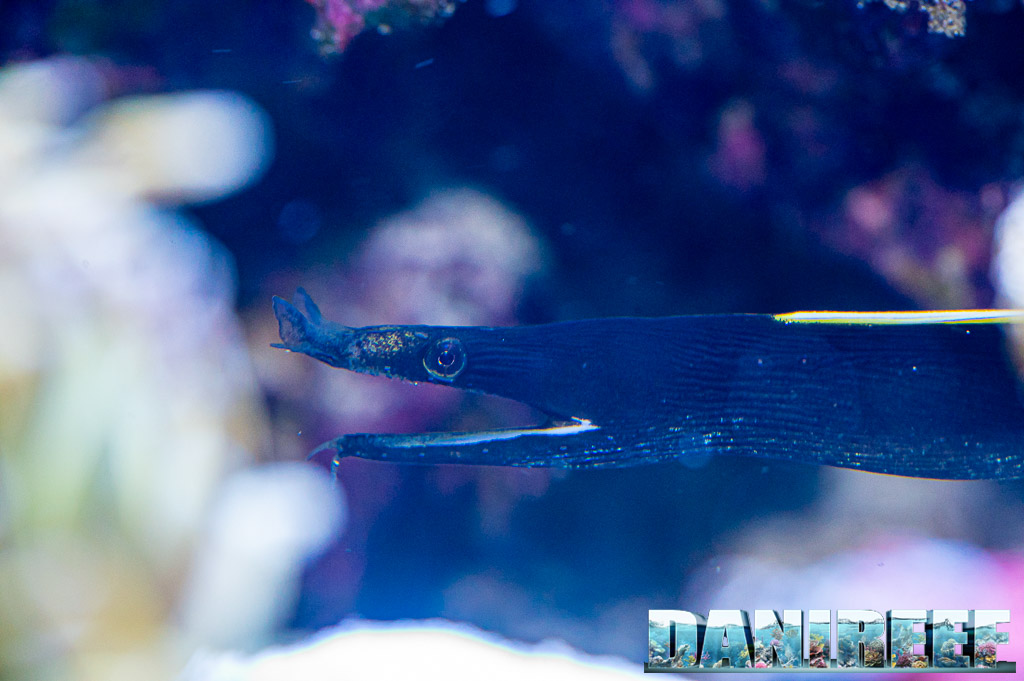
And then there are the corals, where Pasquale admits—though we had already noticed—that his true passion lies with Acroporas, as his aquarium is absolutely full of them.
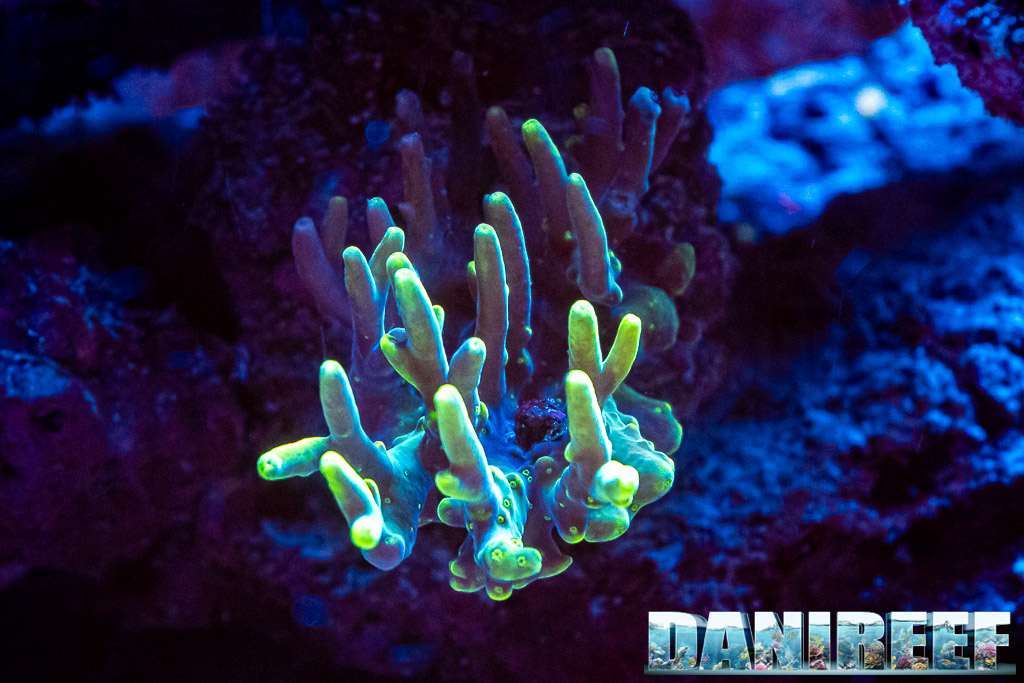
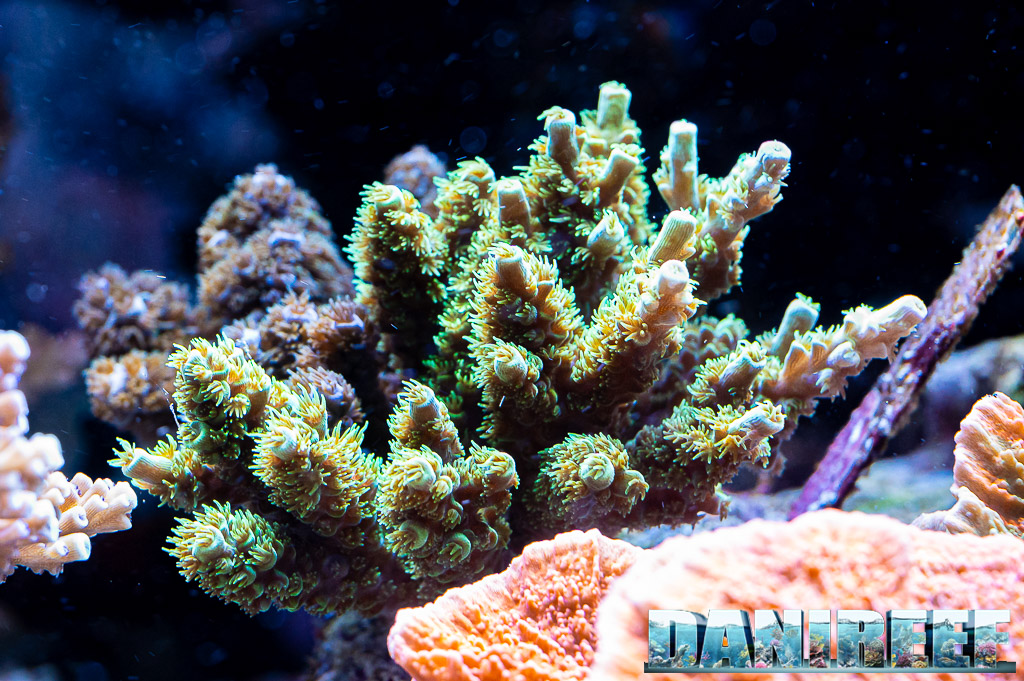
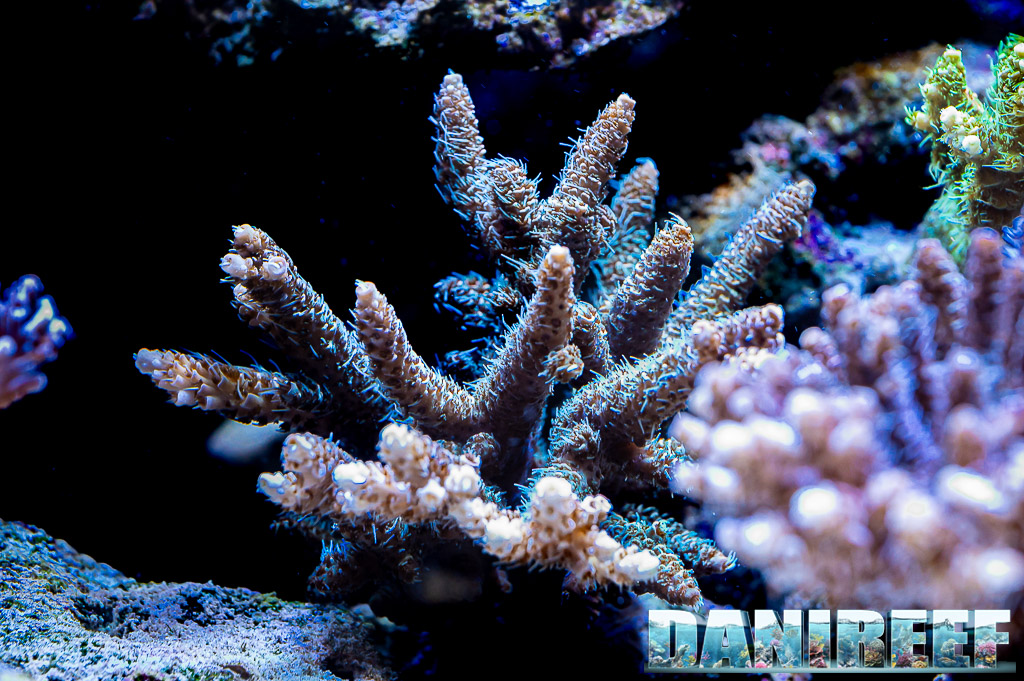
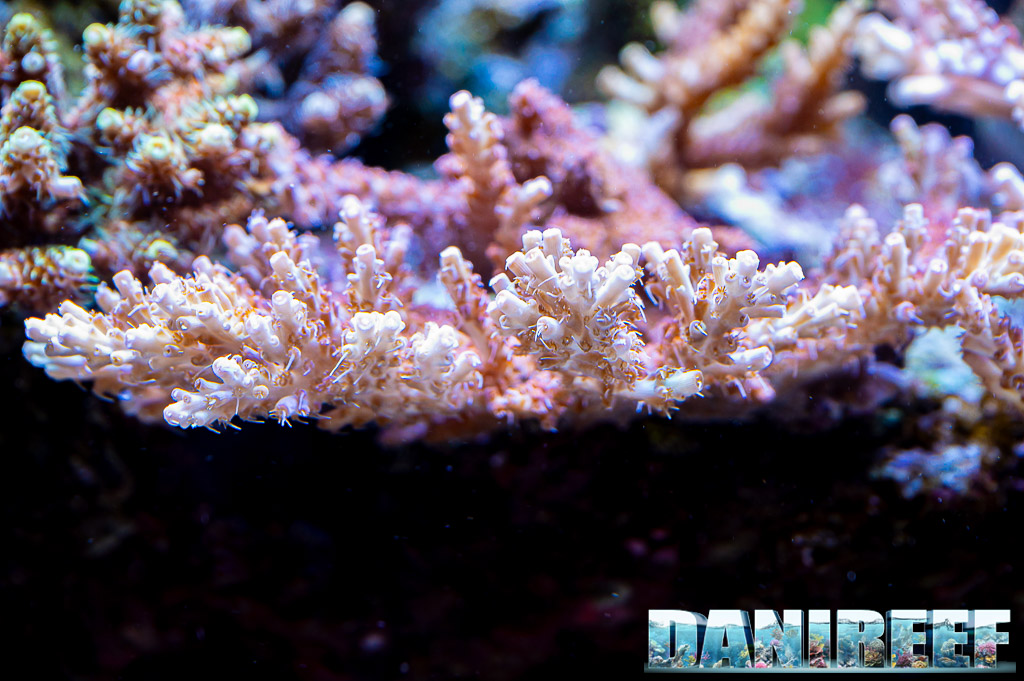
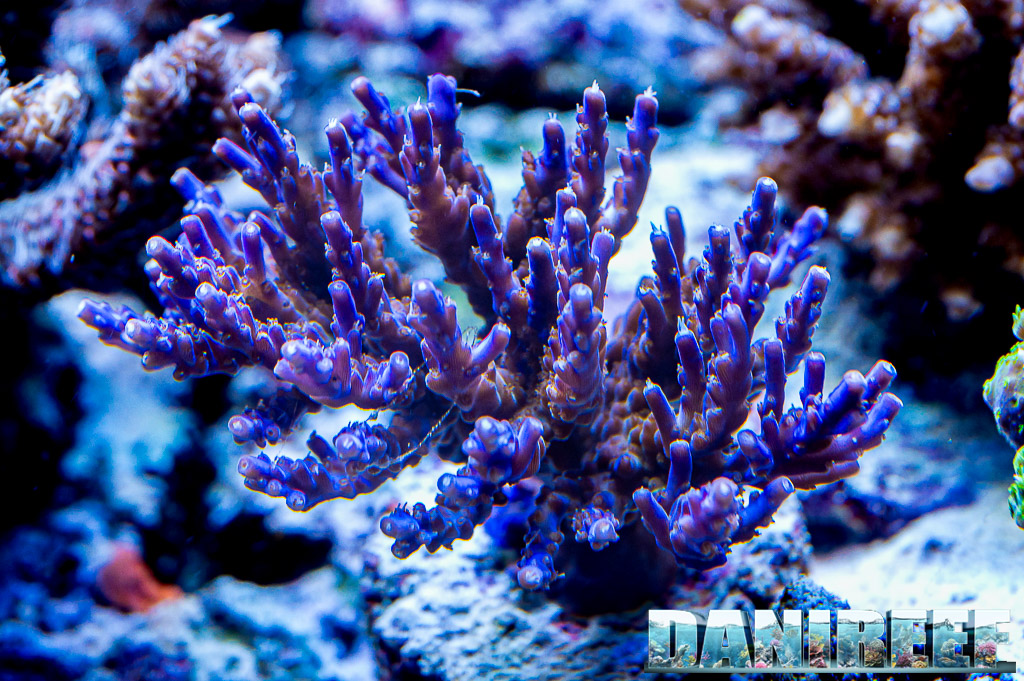
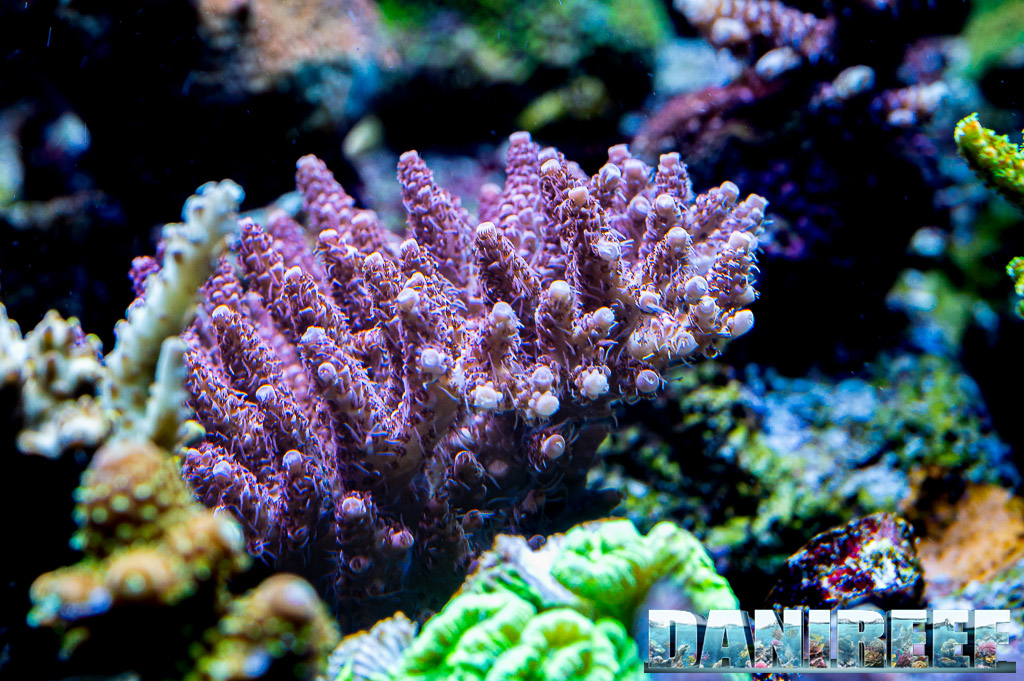
Among the Acroporas, his favorites are the Acropora tenuis, and honestly, we couldn’t agree more.
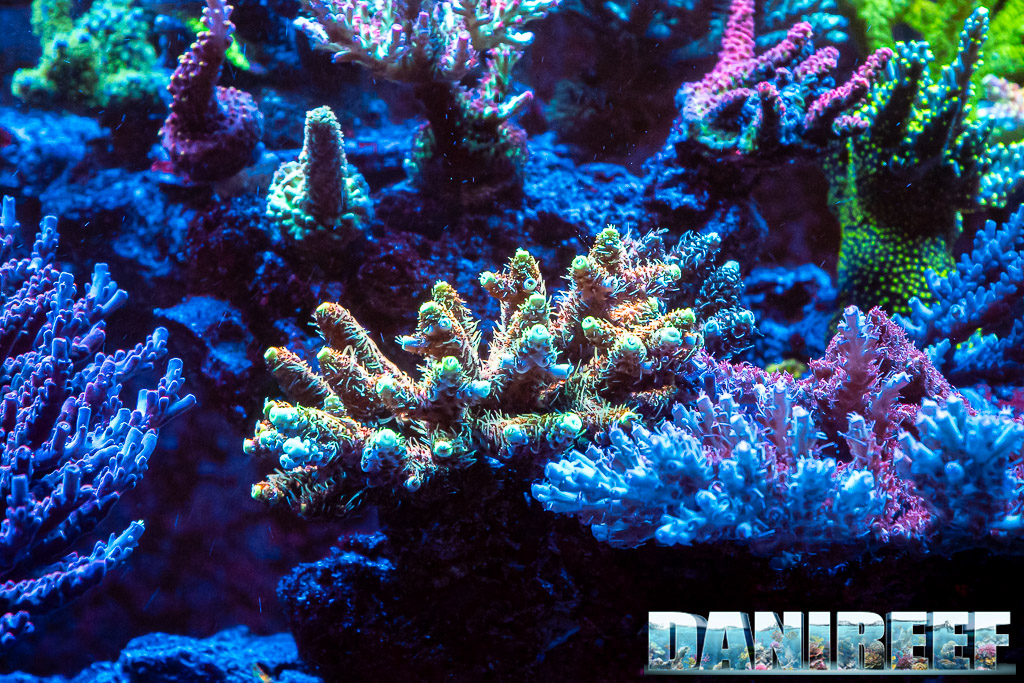
The DaniReef Comment
The aquarium is stunningly beautiful. In my mind, it’s the kind of aquarium I’d want to have at home—very natural, with plenty of fish, though I’d probably add a few more. That said, and to stay true to this site, I’ll make a few observations.
Roughly estimating we find an estimated flow between the tank and sump of about 2,500 l/h. This is a good value for the skimmer and the aquarium in question, though technically it’s not a perfect value to maximize the skimmer’s potential. With this estimated flow, the skimmer isn’t working at its full capacity, which could handle at least 6,500 l/h. For this reason, technically speaking, I would increase the flow to at least 65% or more, after verifying the actual flow rate.
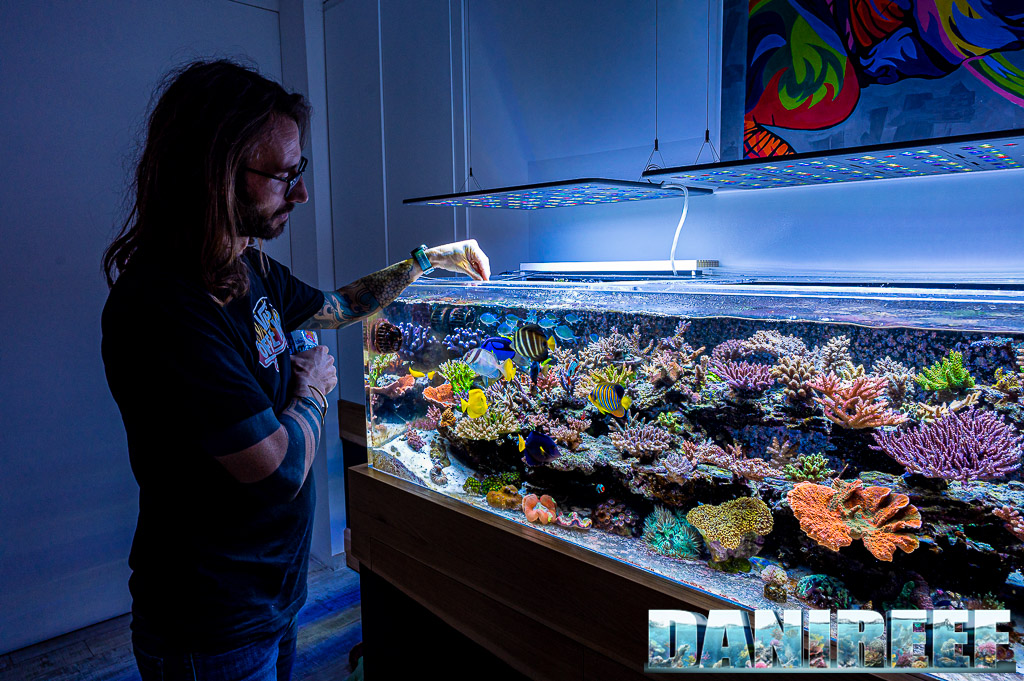
That said, if the aquarium is working so well as it is, there’s no need to increase the flow. On paper, the skimmer could perform better with higher flow, but given that the aquarium has reached an excellent balance, any changes should be considered carefully. Here, we’re discussing this purely for the sake of conversation.
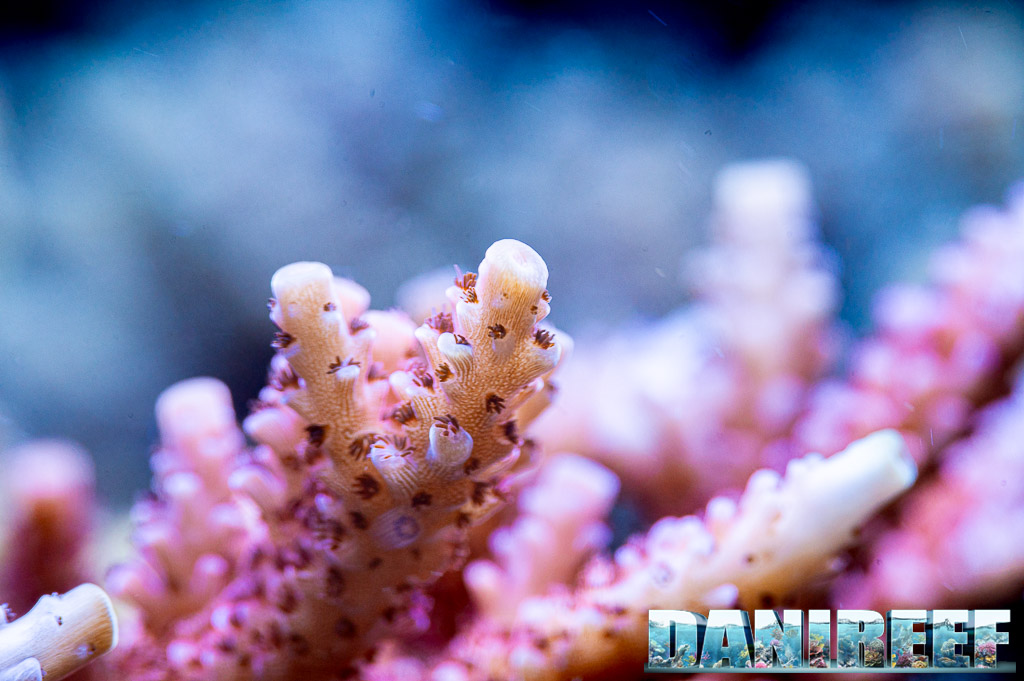
But remember these two numbers: 1,100 PAR and water movement equal to 21 times the volume of the aquarium, in a 726-liter tank.
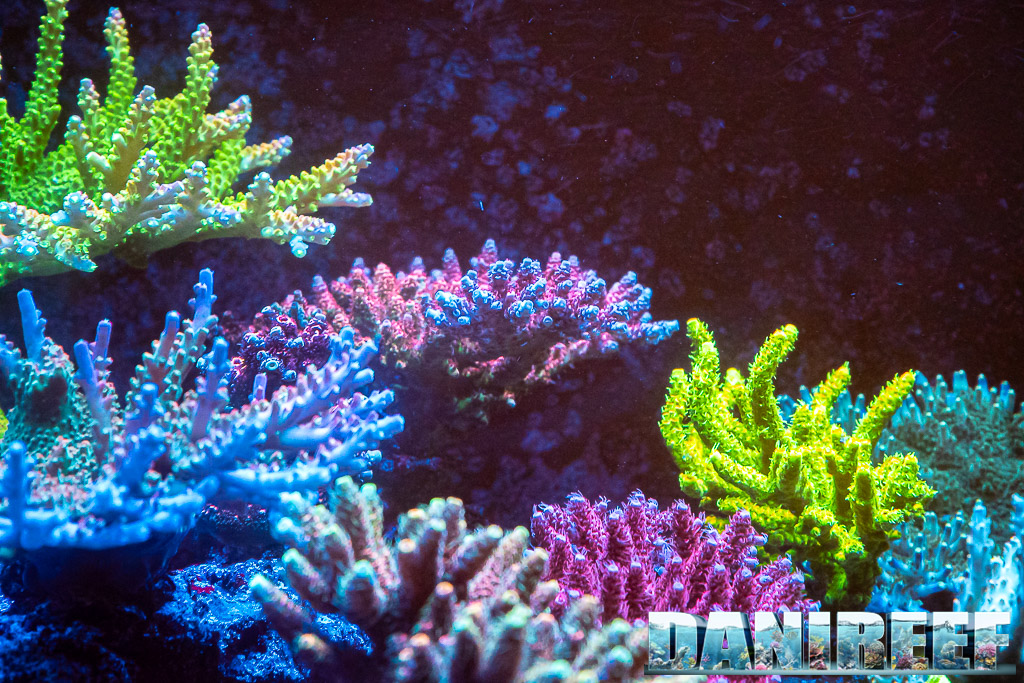
The elevated rockscape with plenty of space underneath is fantastic. It provides lots of room for the fish to swim in and out of the caves naturally.

In the case of Pasquale Ruocco’s marine aquarium, we’re witnessing near-total technical perfection, which isn’t just for show but results in an absolutely incredible aquarium that leaves you speechless. There are lots of fish, though not too many, but I’m sure Pasquale will add more. We’ve summarized them on the next table, but they’re all peaceful despite the presence of a Ribbon Eel, something I’ve never seen before. In fact, nutrient levels are carefully regulated, with more or less daily feeding of Hikari foods, which we’ve tested and liked, Hexacorallia foods, BEA Flakes, BEA Pure Eggs, SHG medium and large granules, and AquaForest Af marine granules.
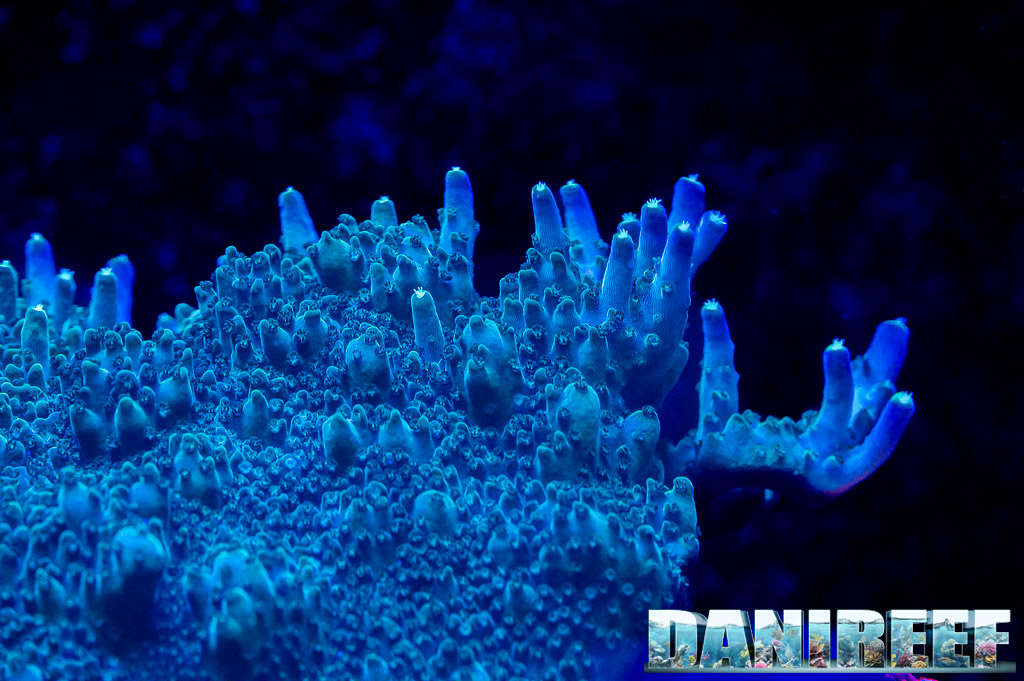
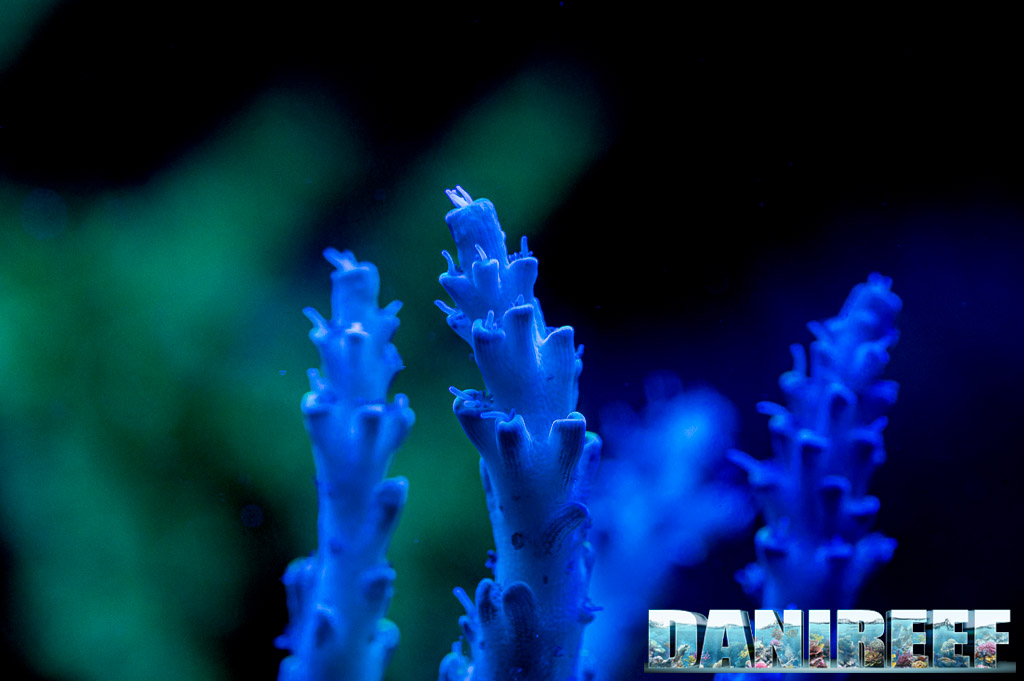
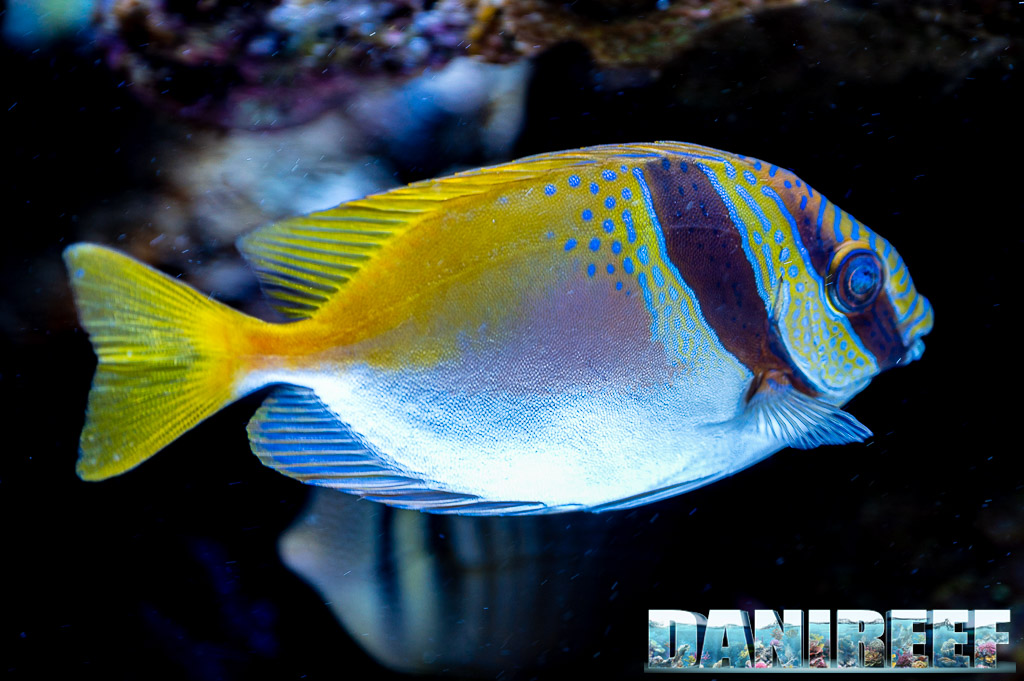
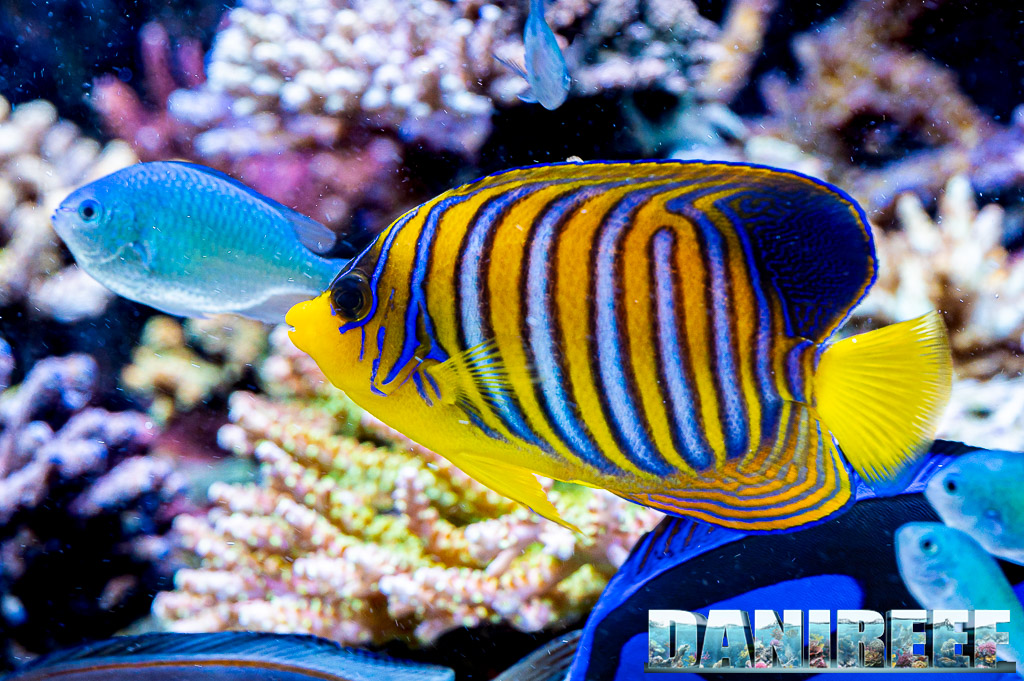
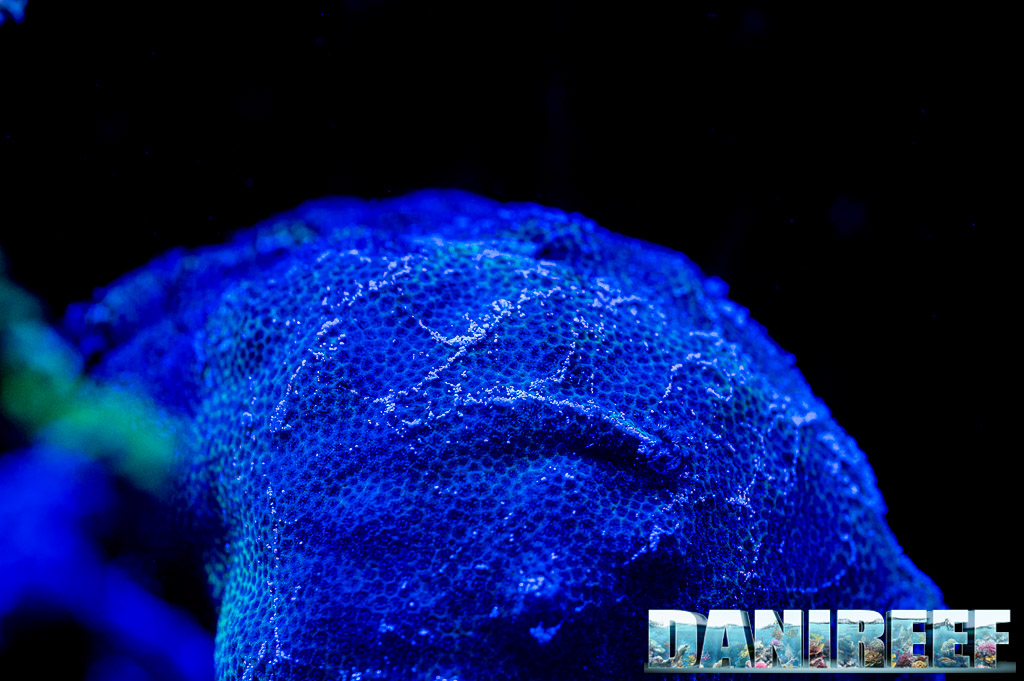
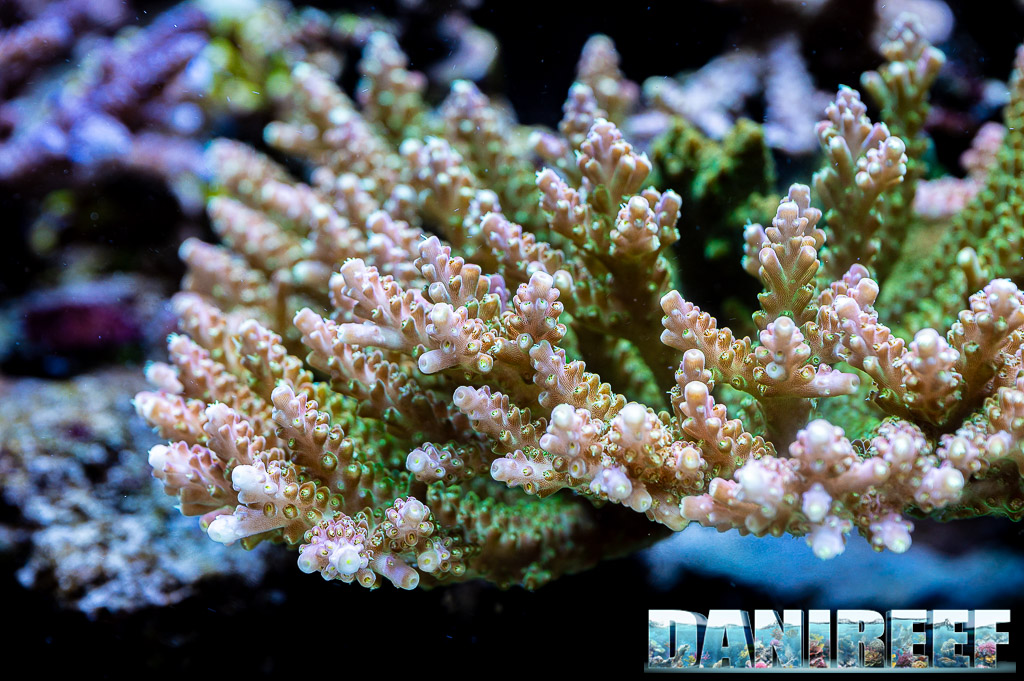
It’s really hard to find any faults in this magnificent marine aquarium, which also won our contest. That may not mean much, but it says something. Over 1,100 aquarists voted for it, so we can’t help but congratulate him.
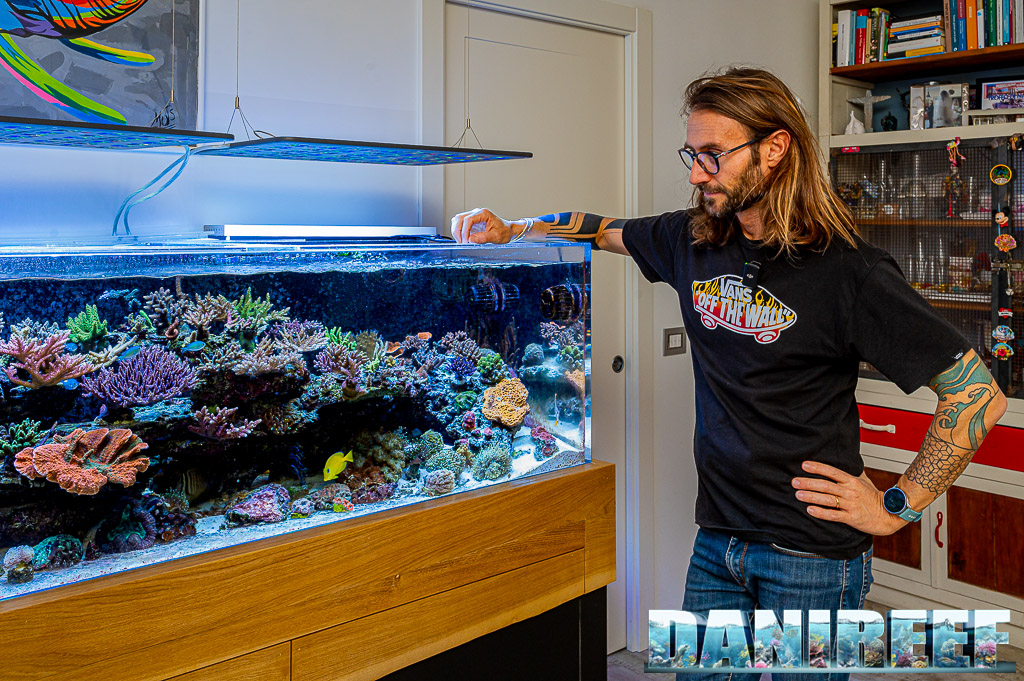
I can’t thank Pasquale enough for allowing us to write this article and share the beauty of this incredible marine aquarium. The entire DaniReef editorial team joins me in extending our warmest congratulations to Pasquale Ruocco for his aquarium and for winning our contest.
To be updated with beautiful photos, videos and to know more about Khorru you can go to his Instagram channel or better yet to the Facebook group BallingMania where Pasquale is the administrator. It’s really worth it!!!
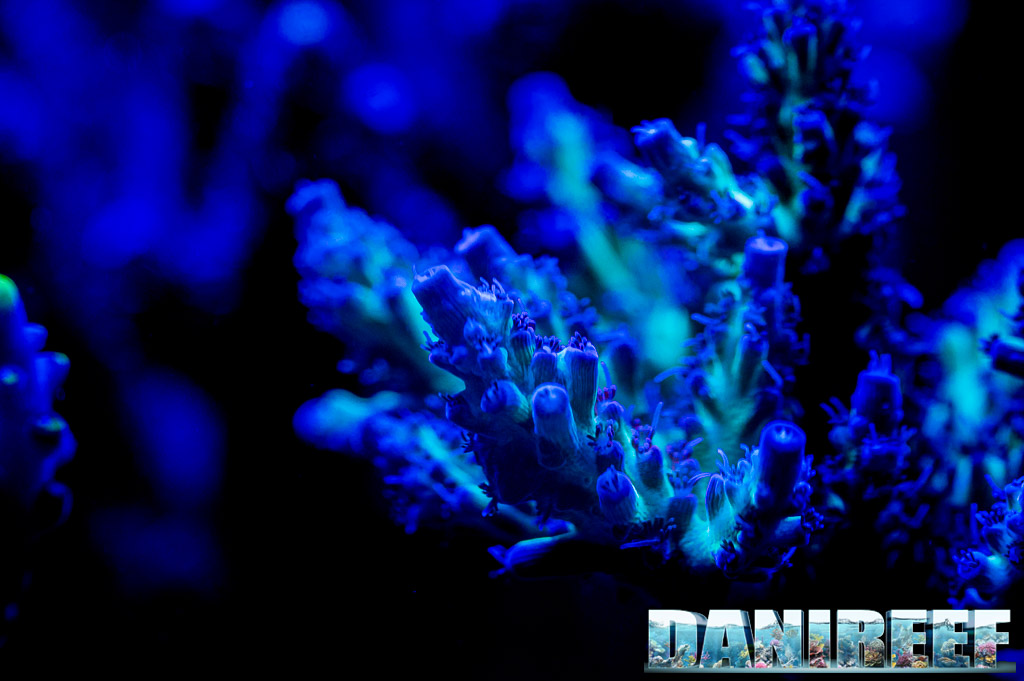
On page two you can find all the photographs we took at Pasquale’s beautiful aquarium, the list of fish and corals hosted.








